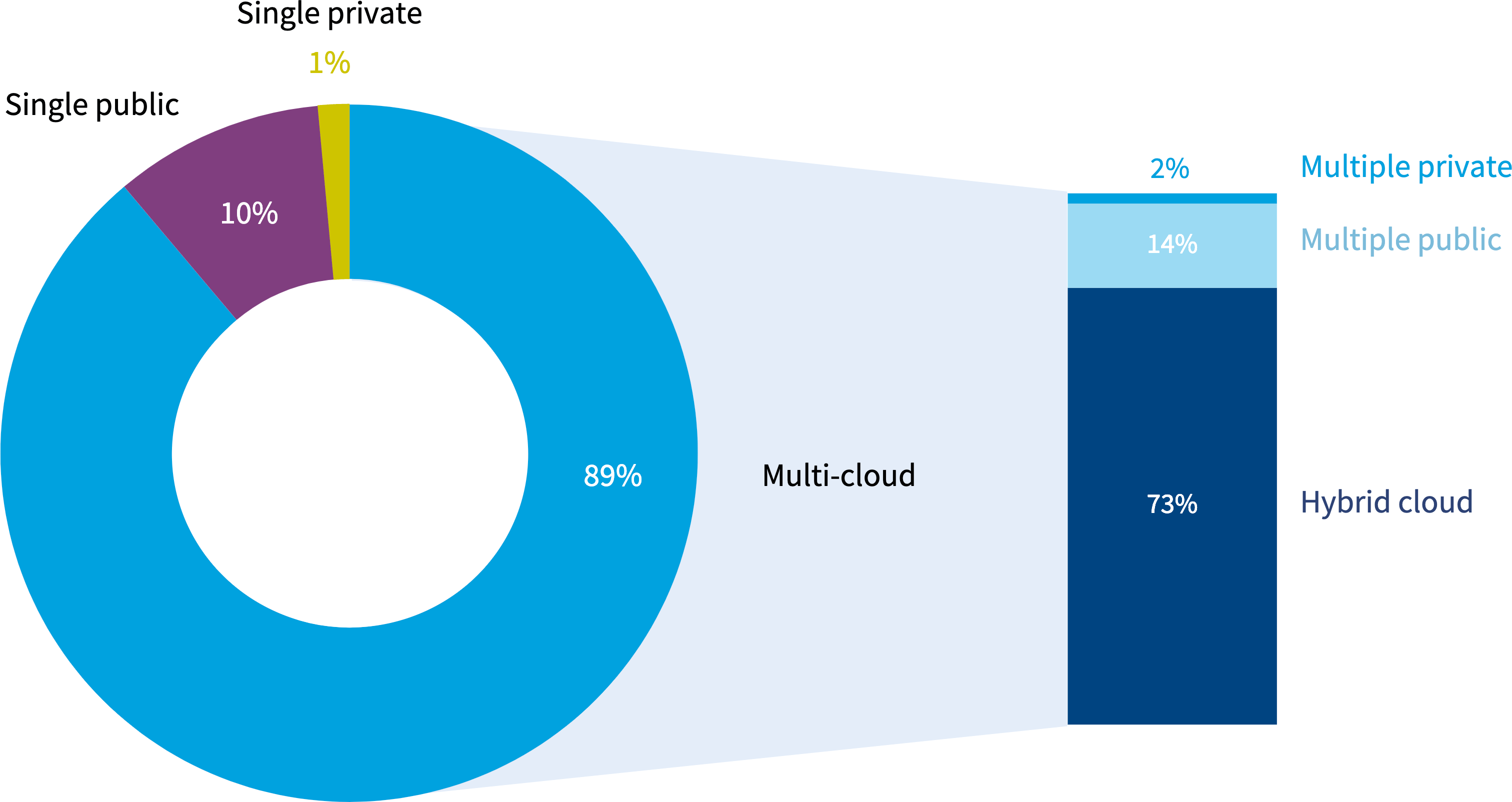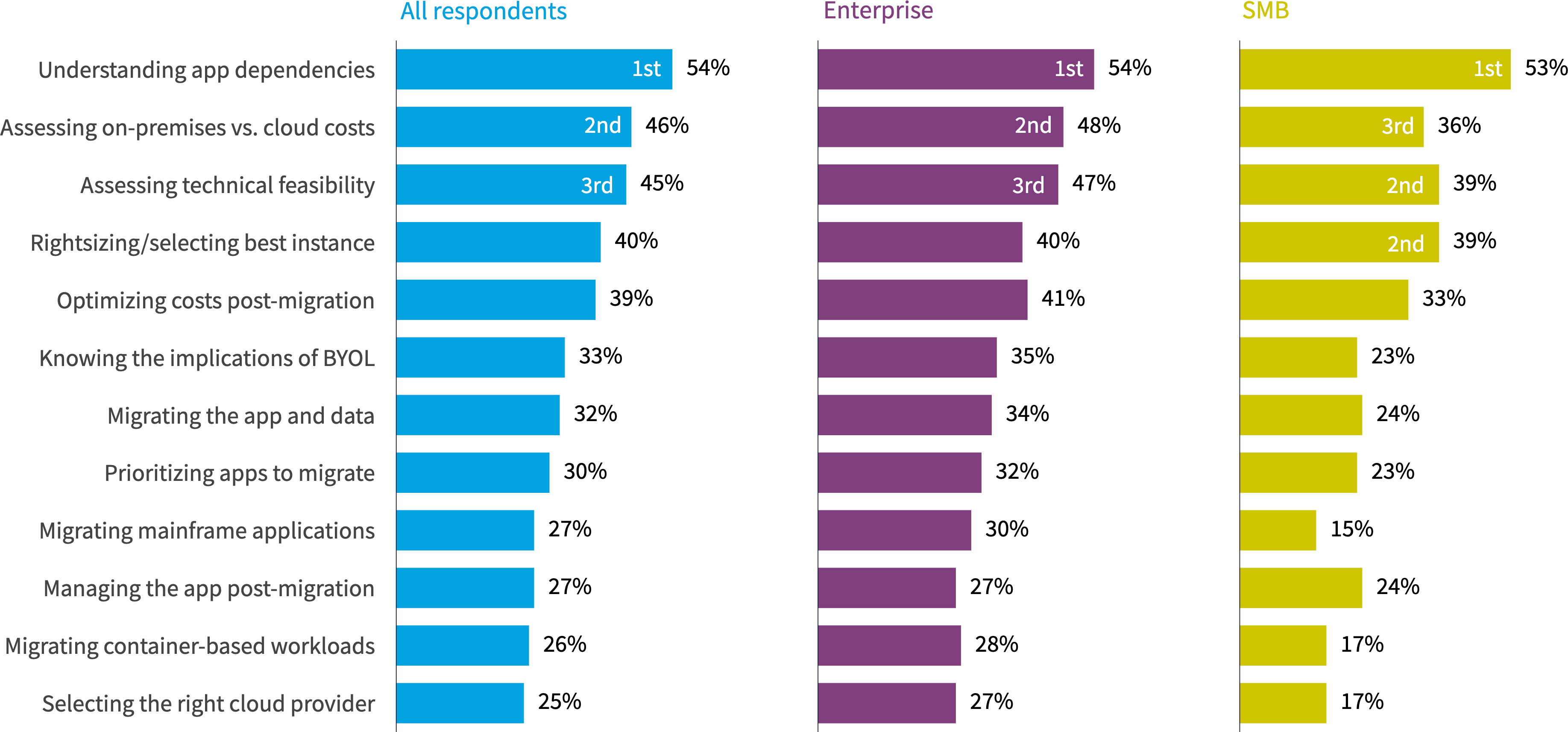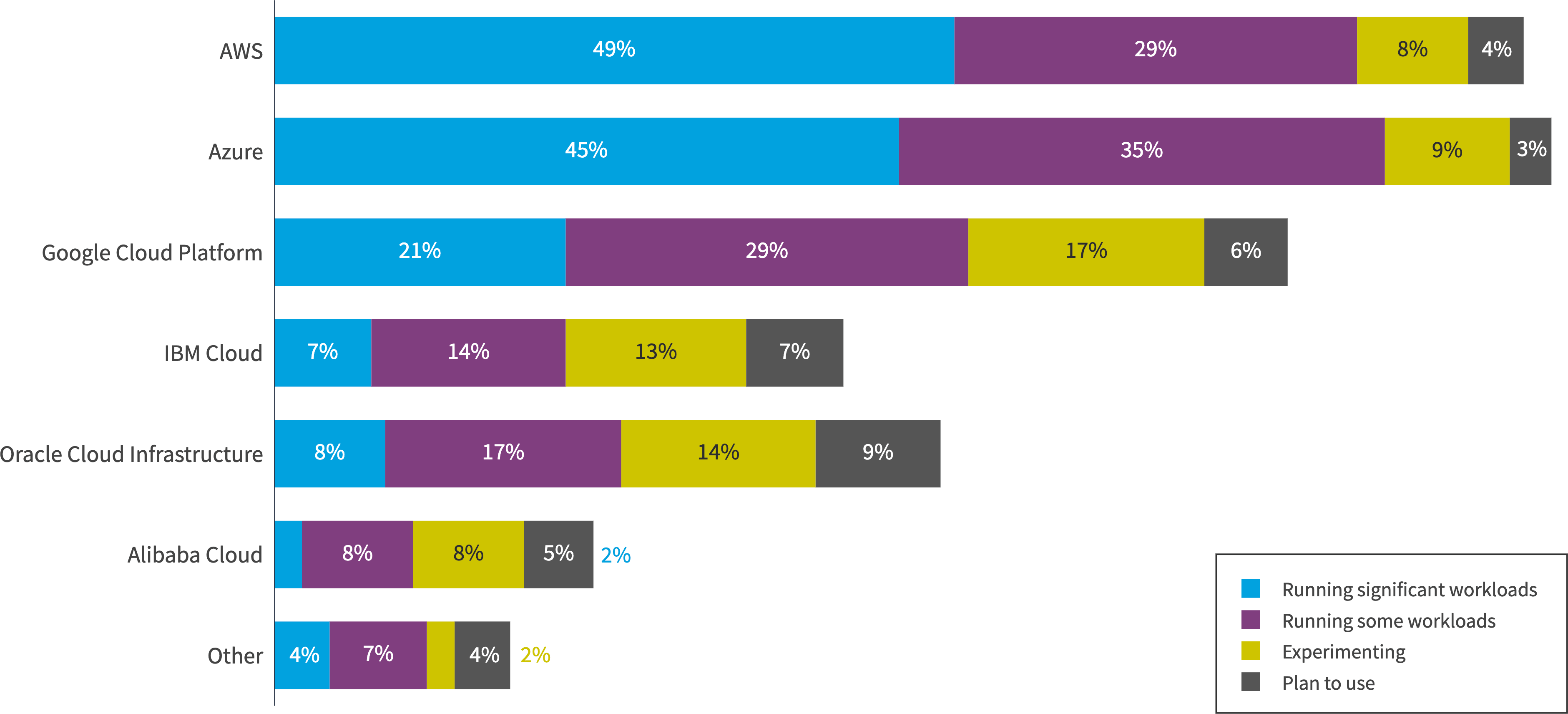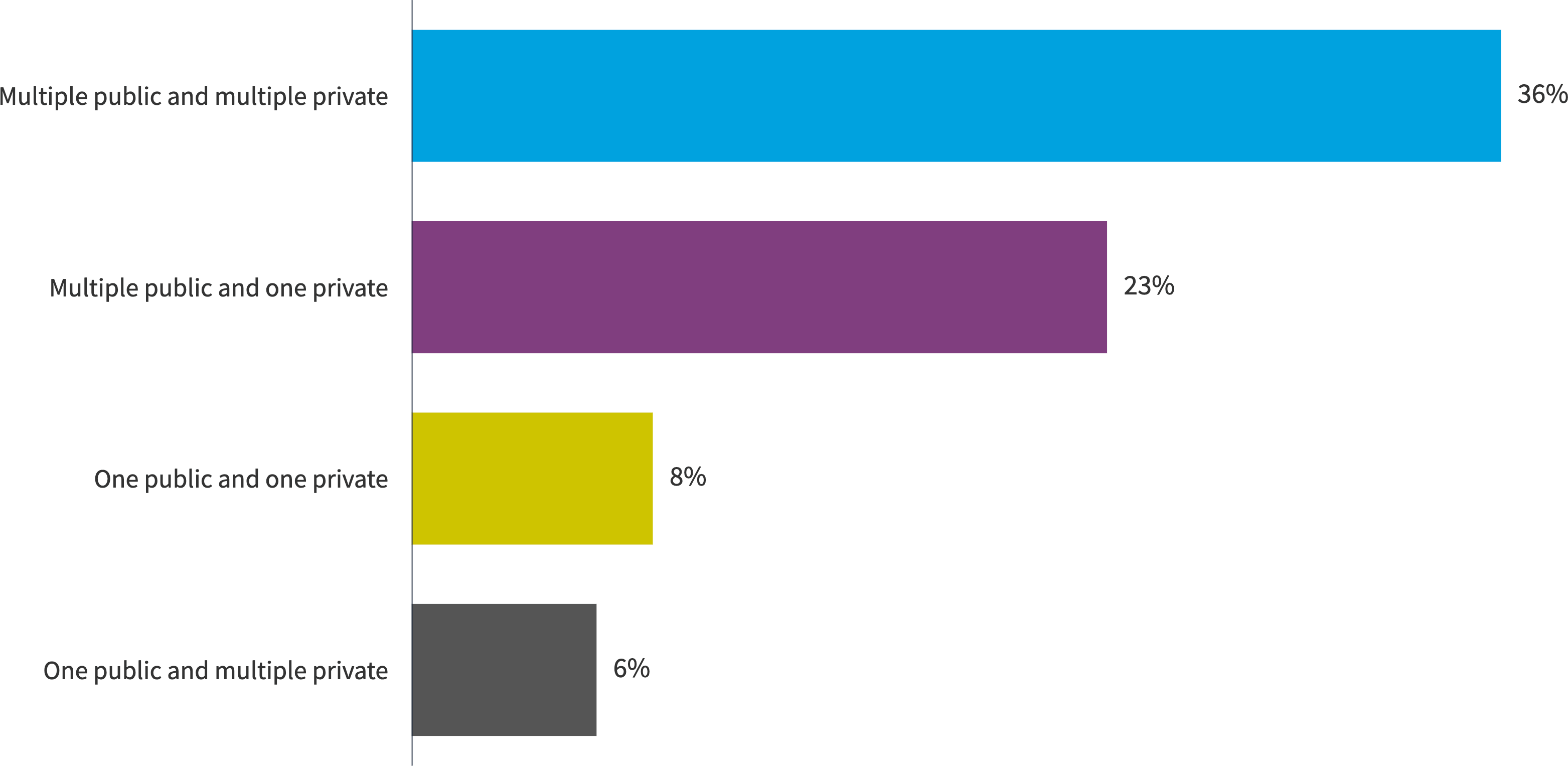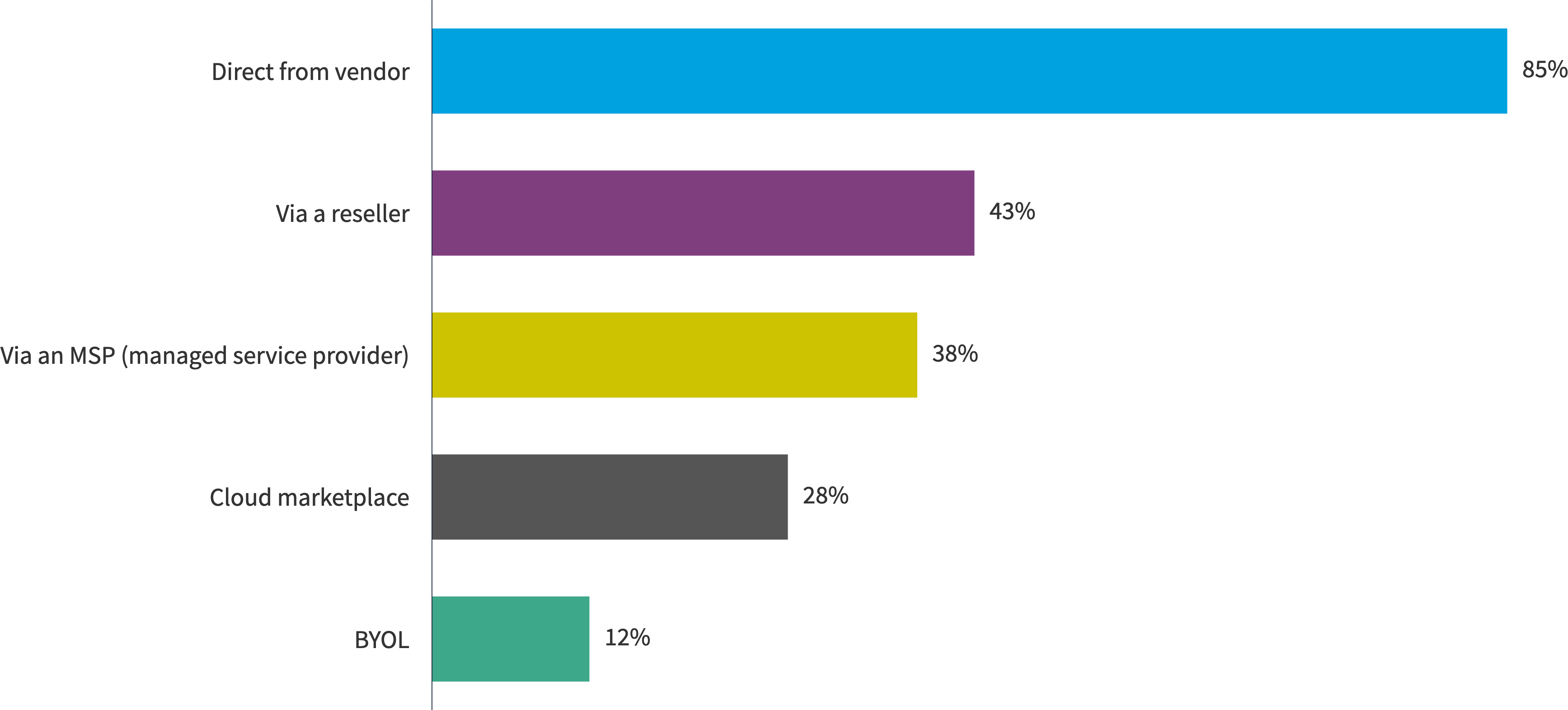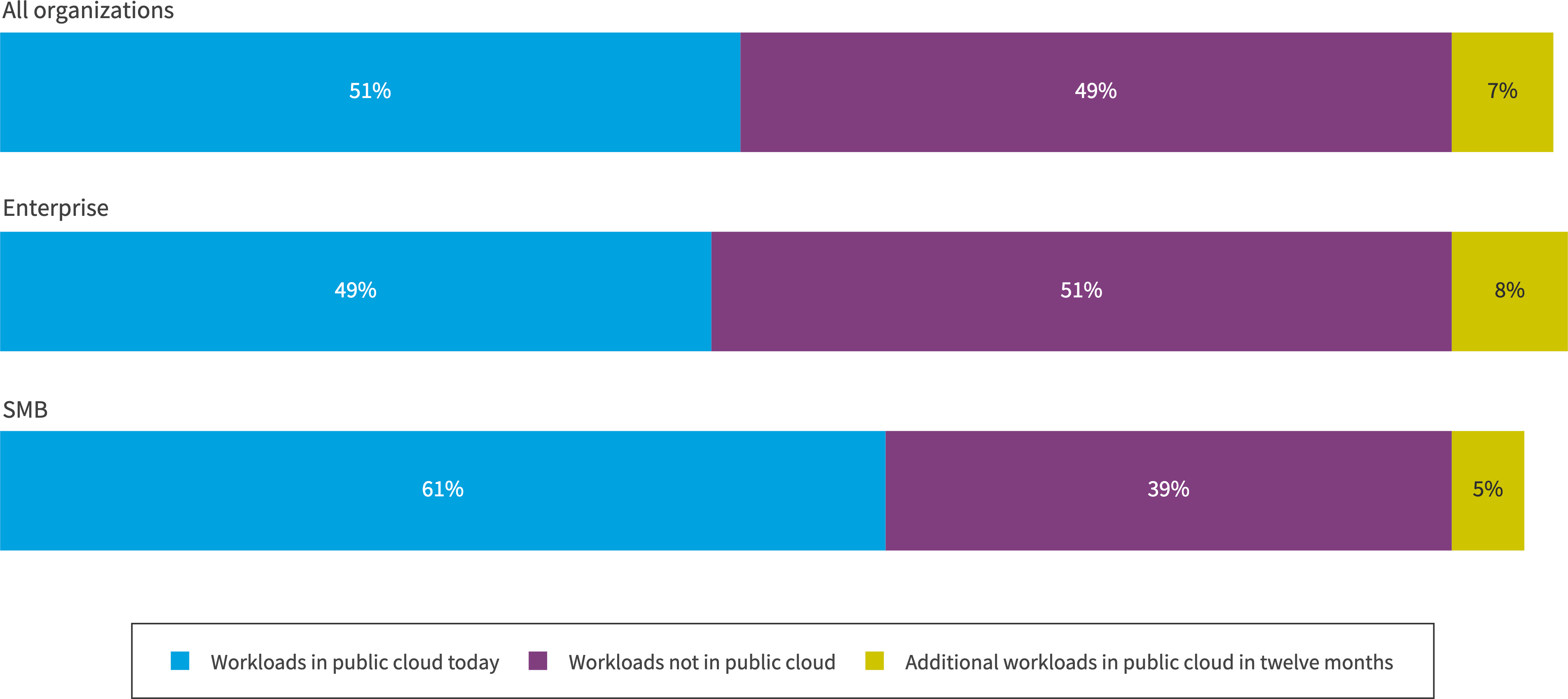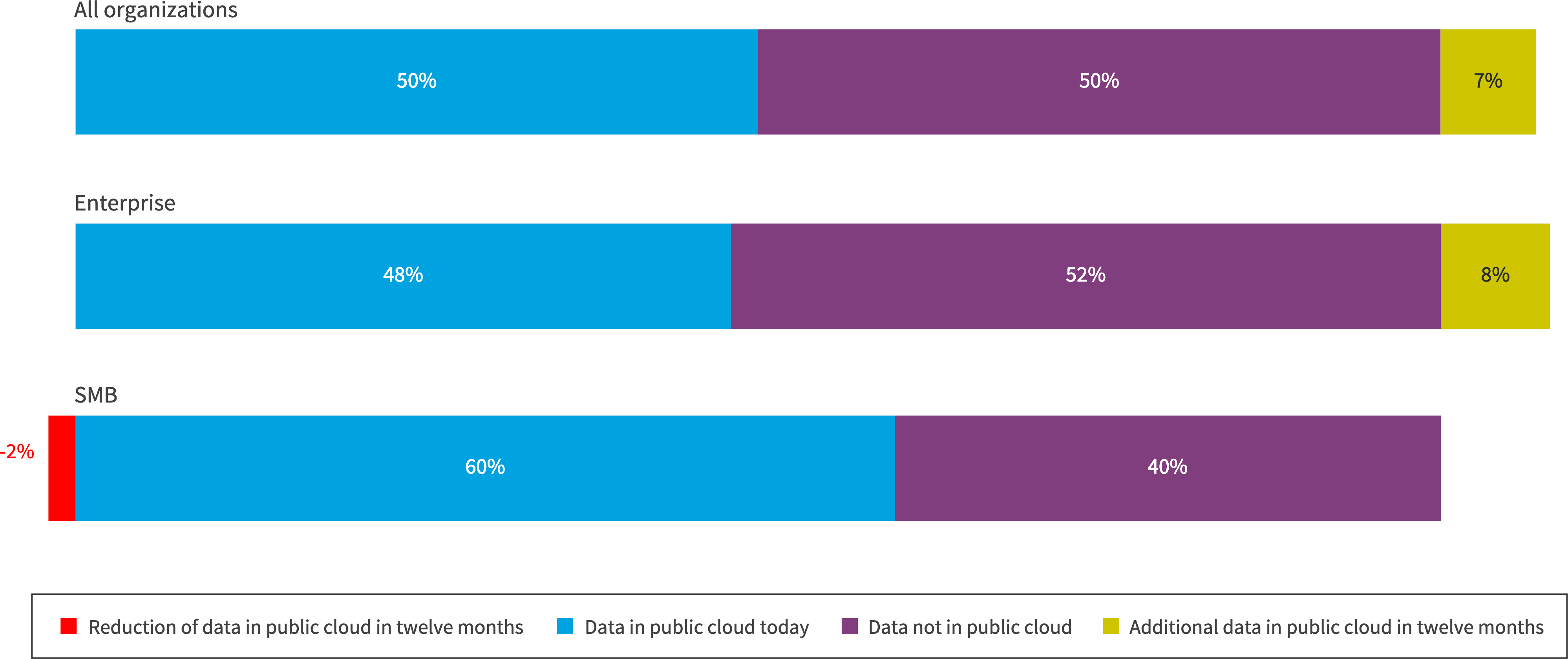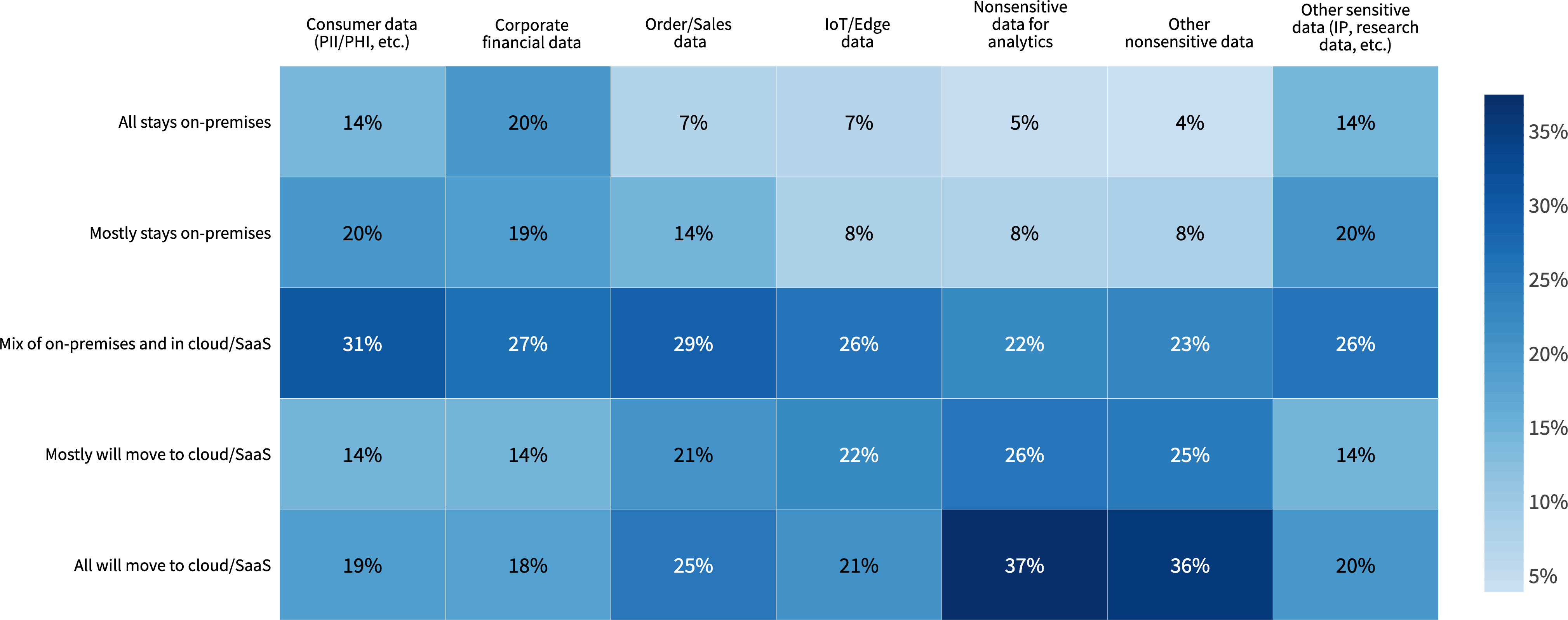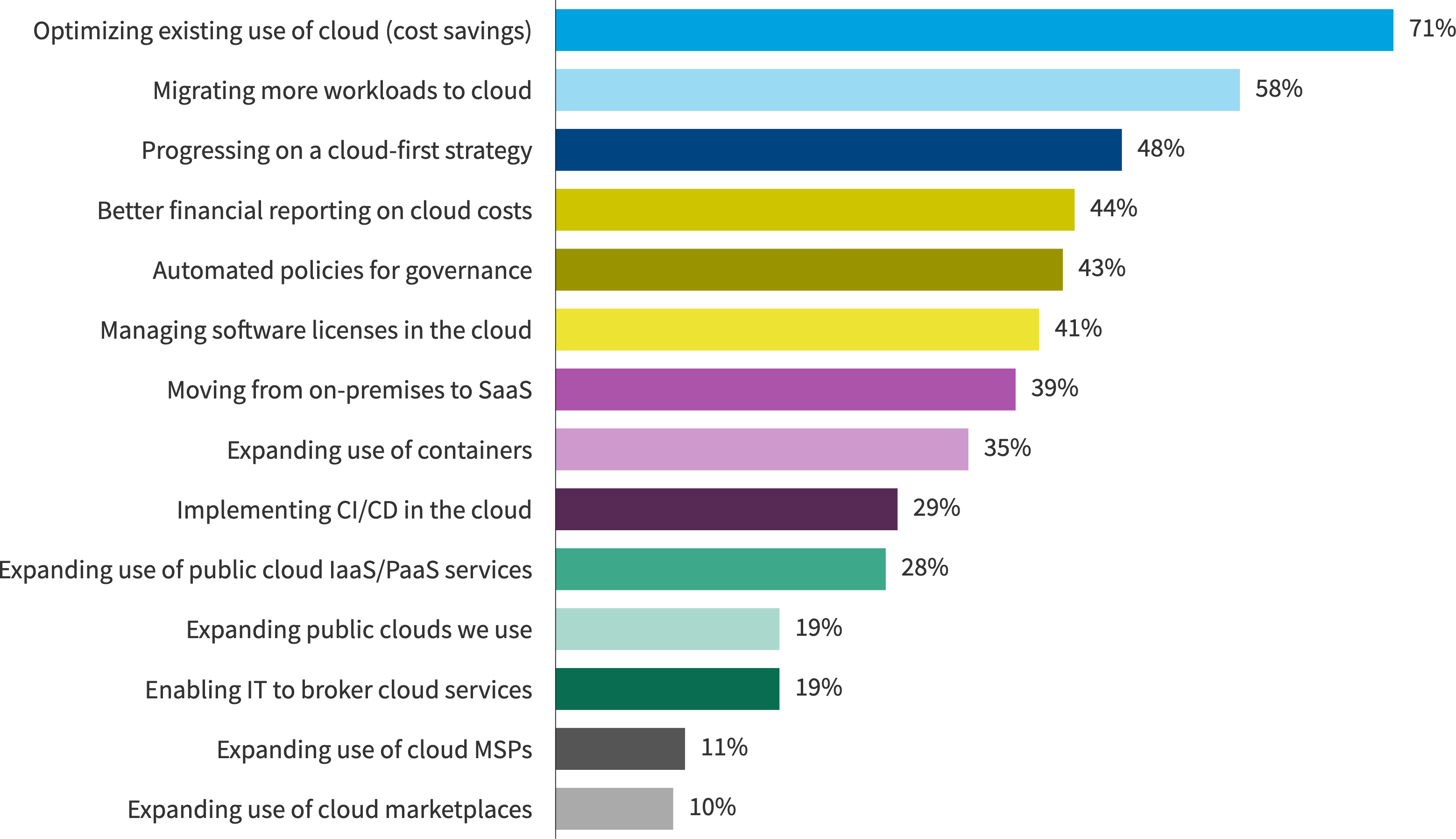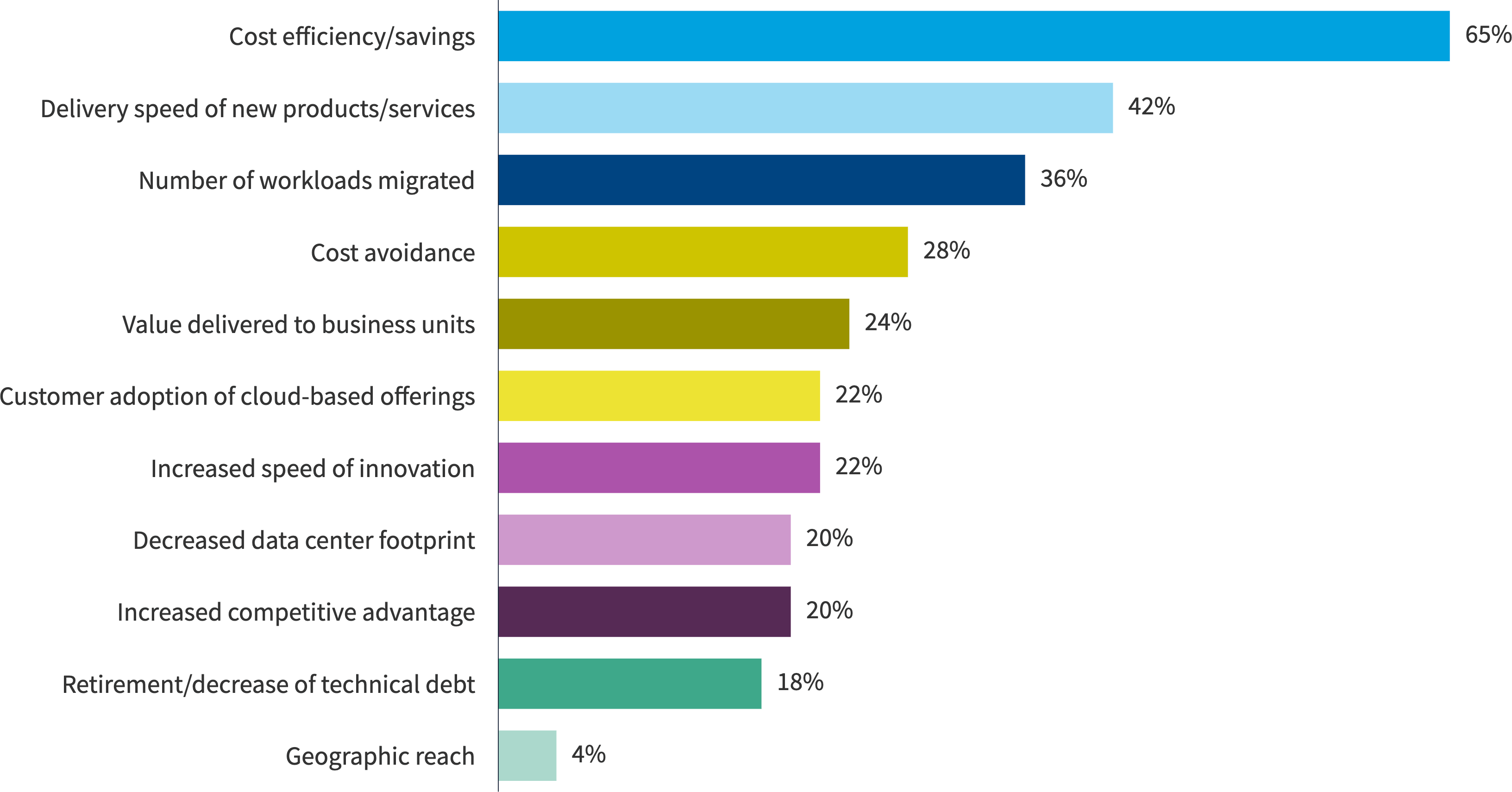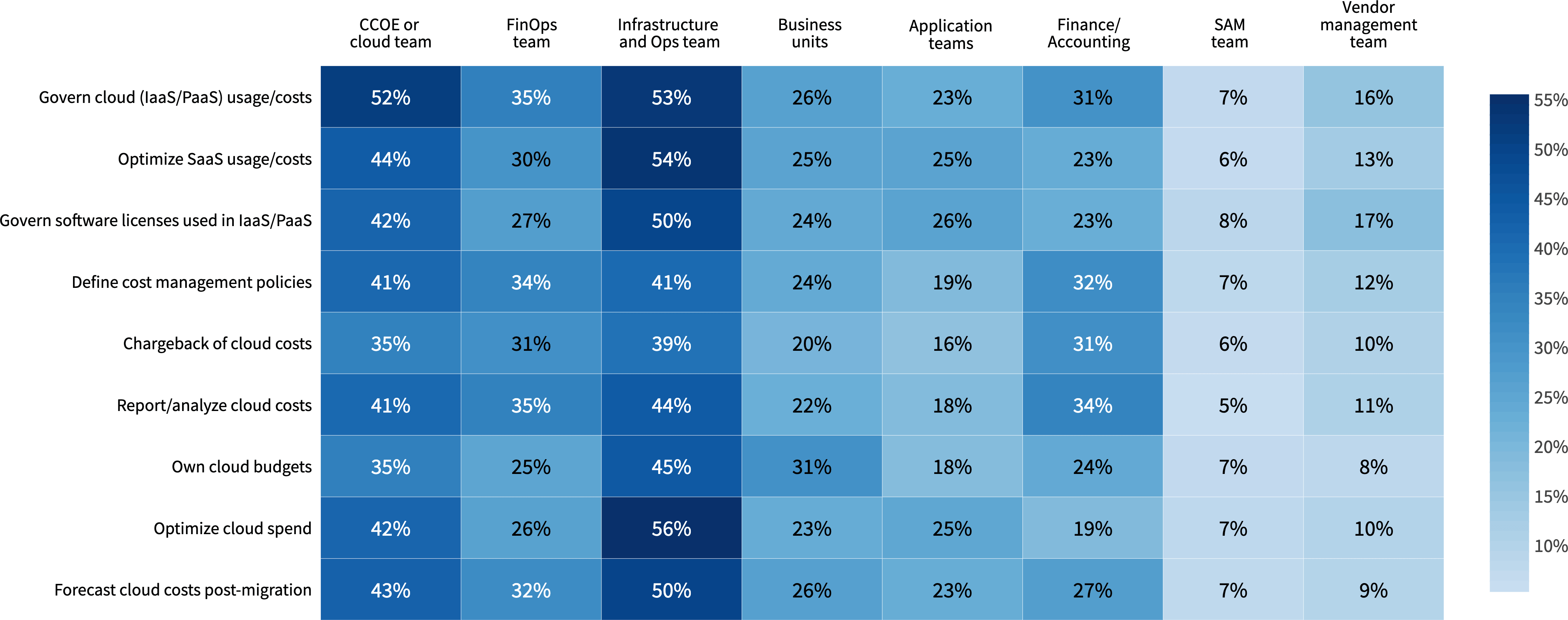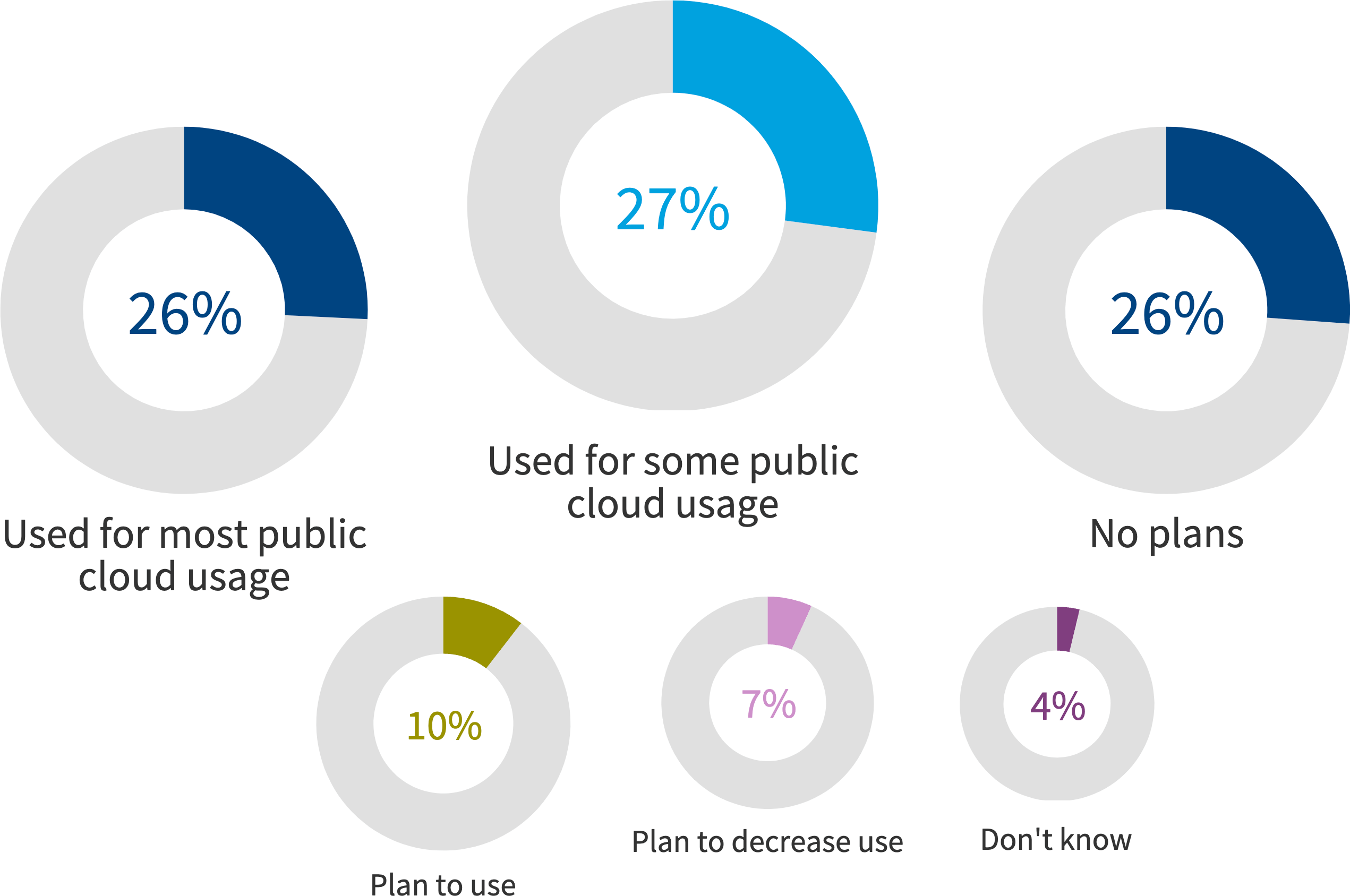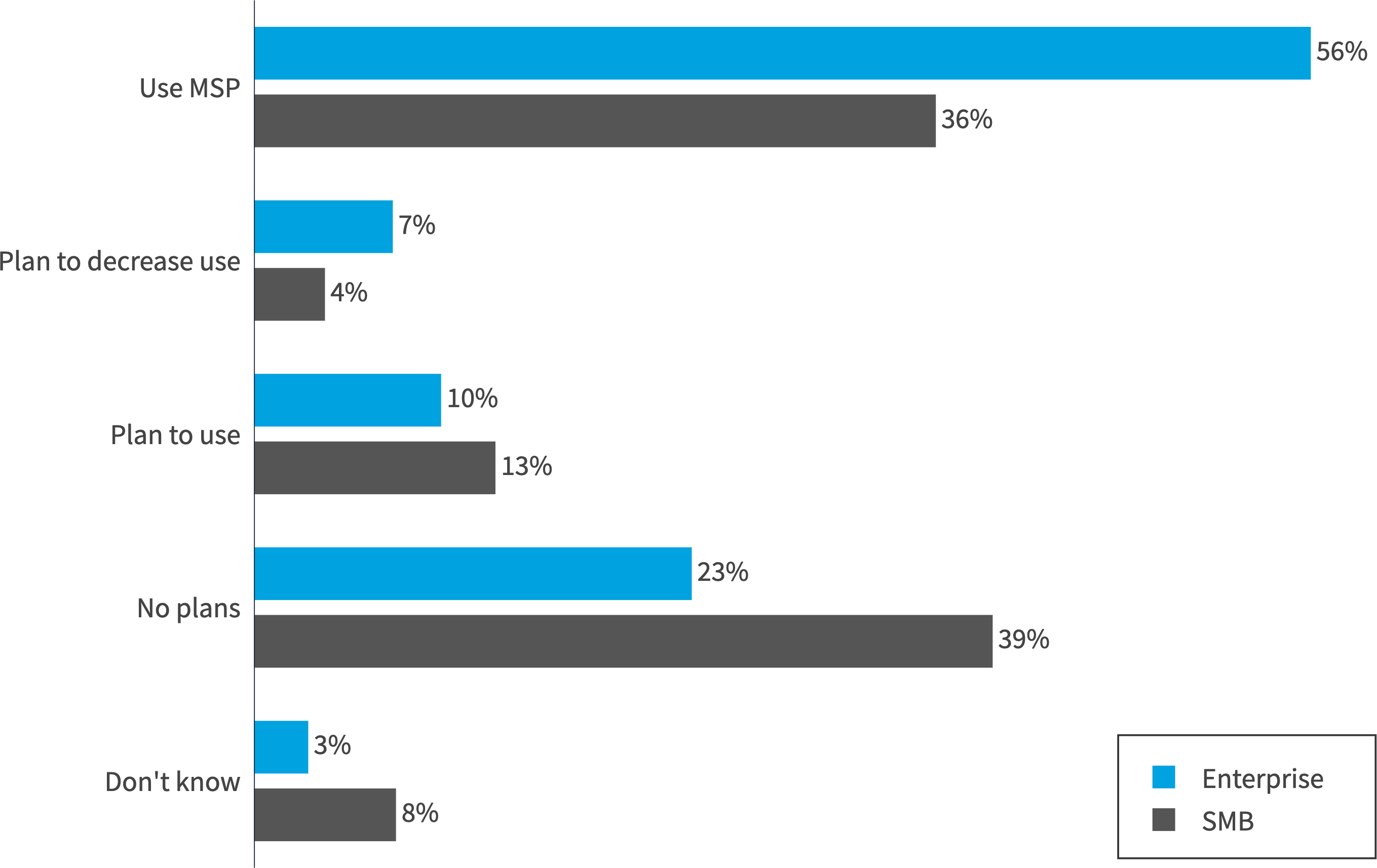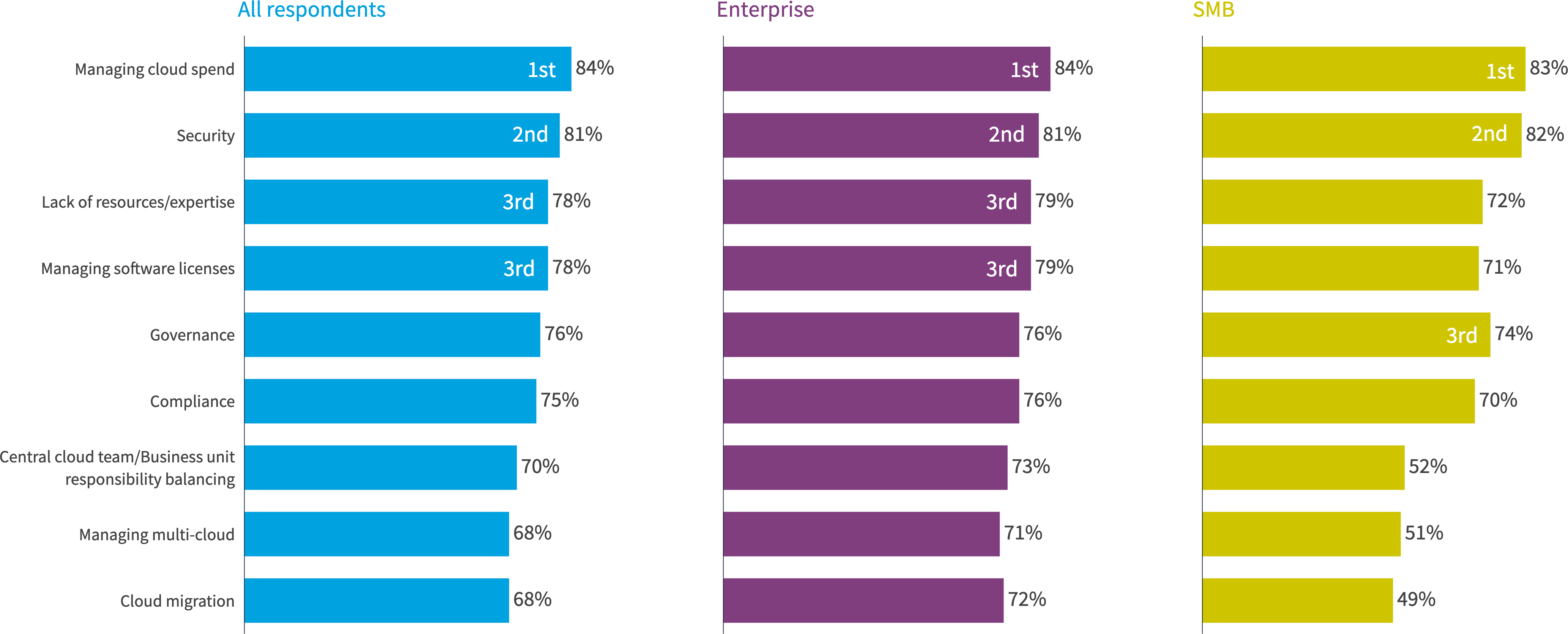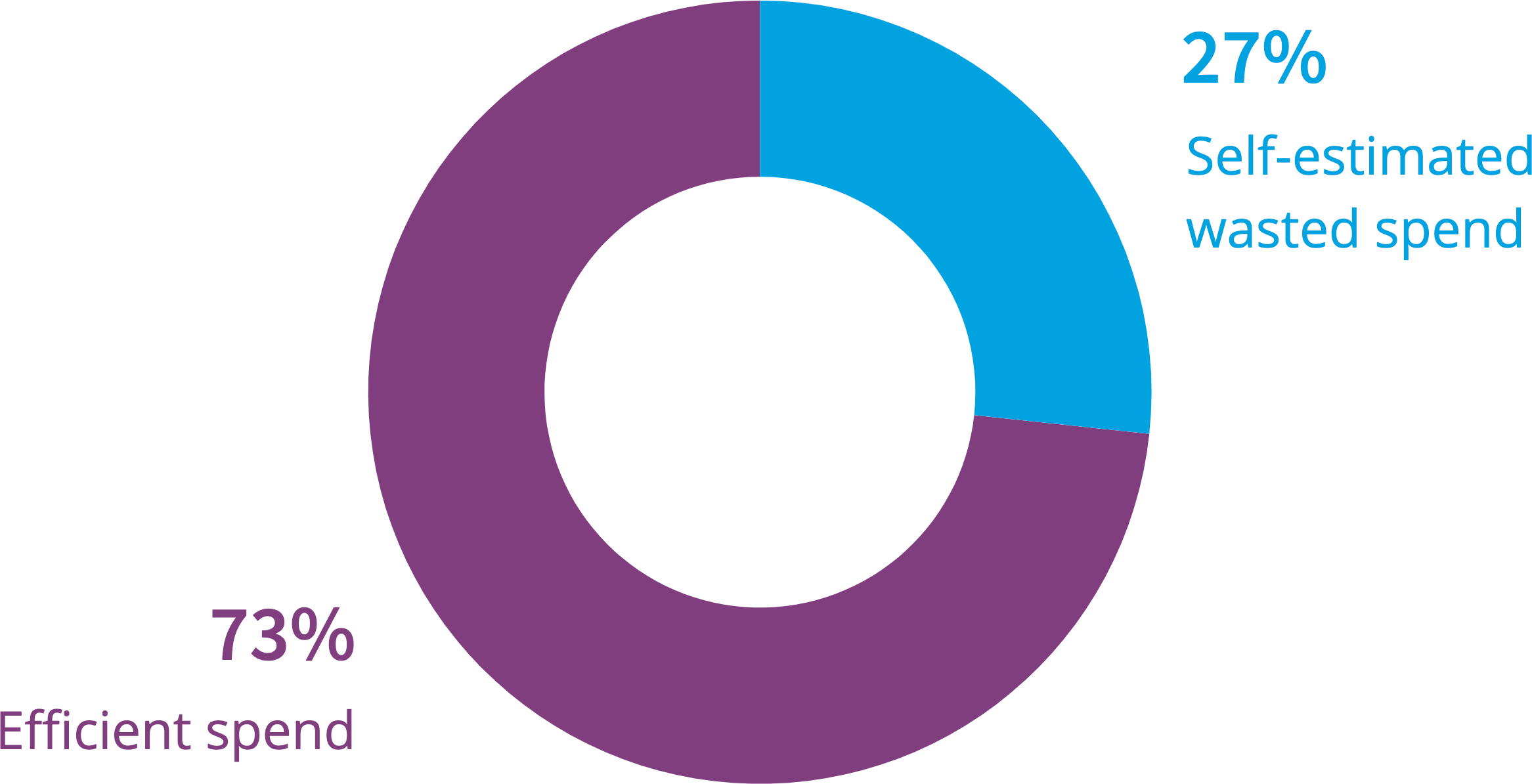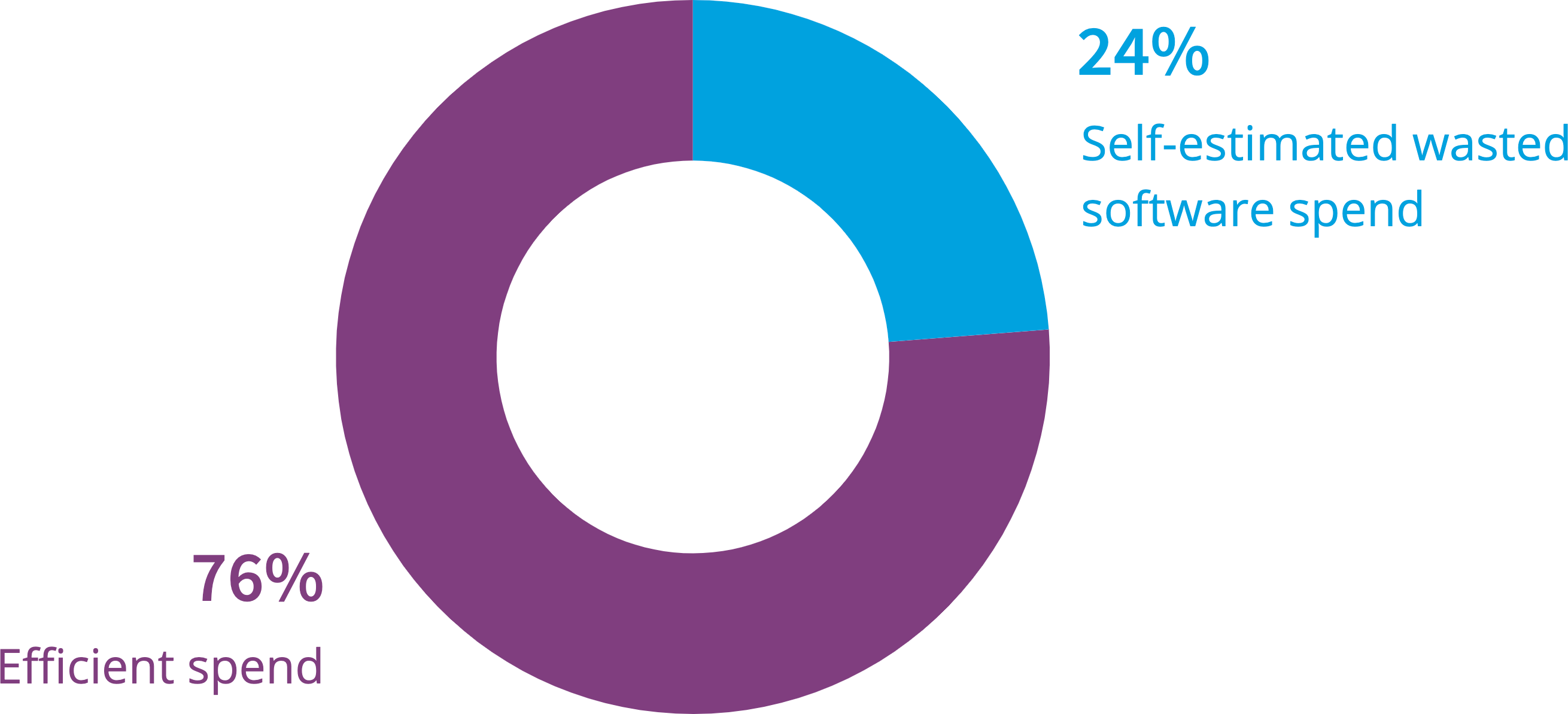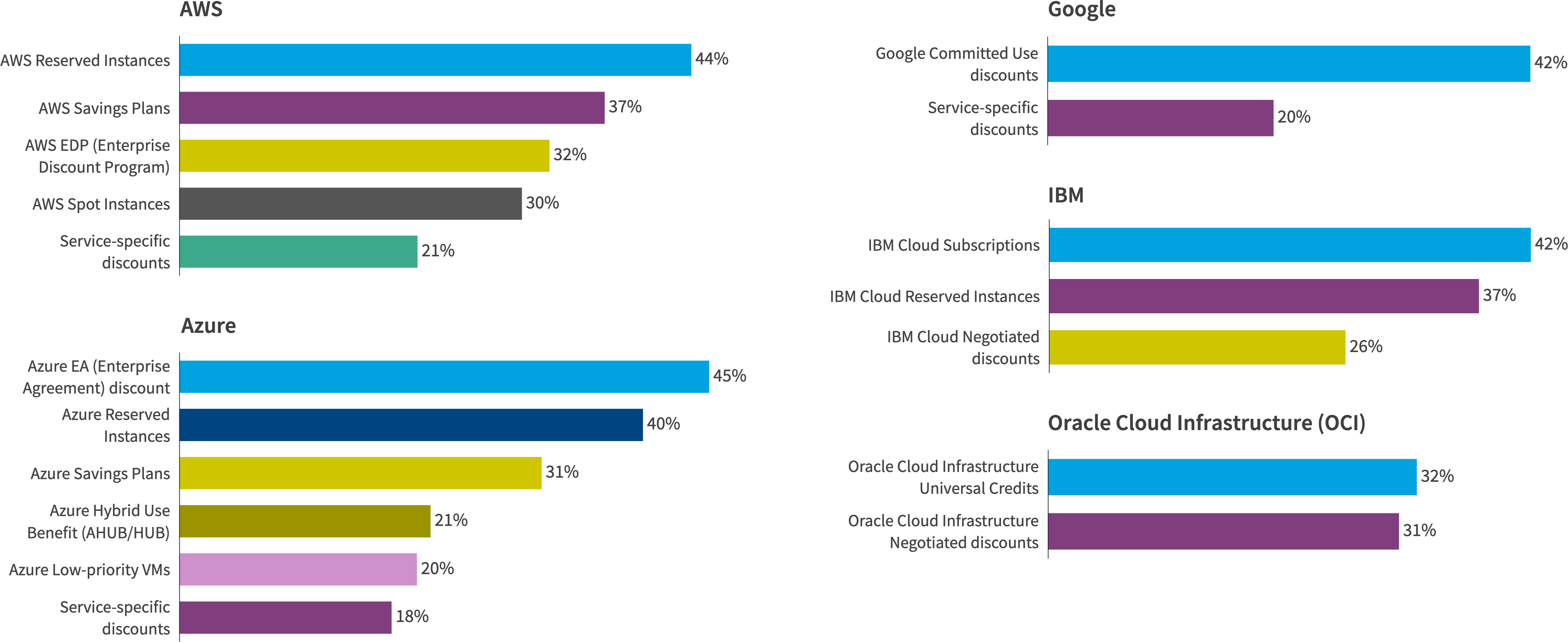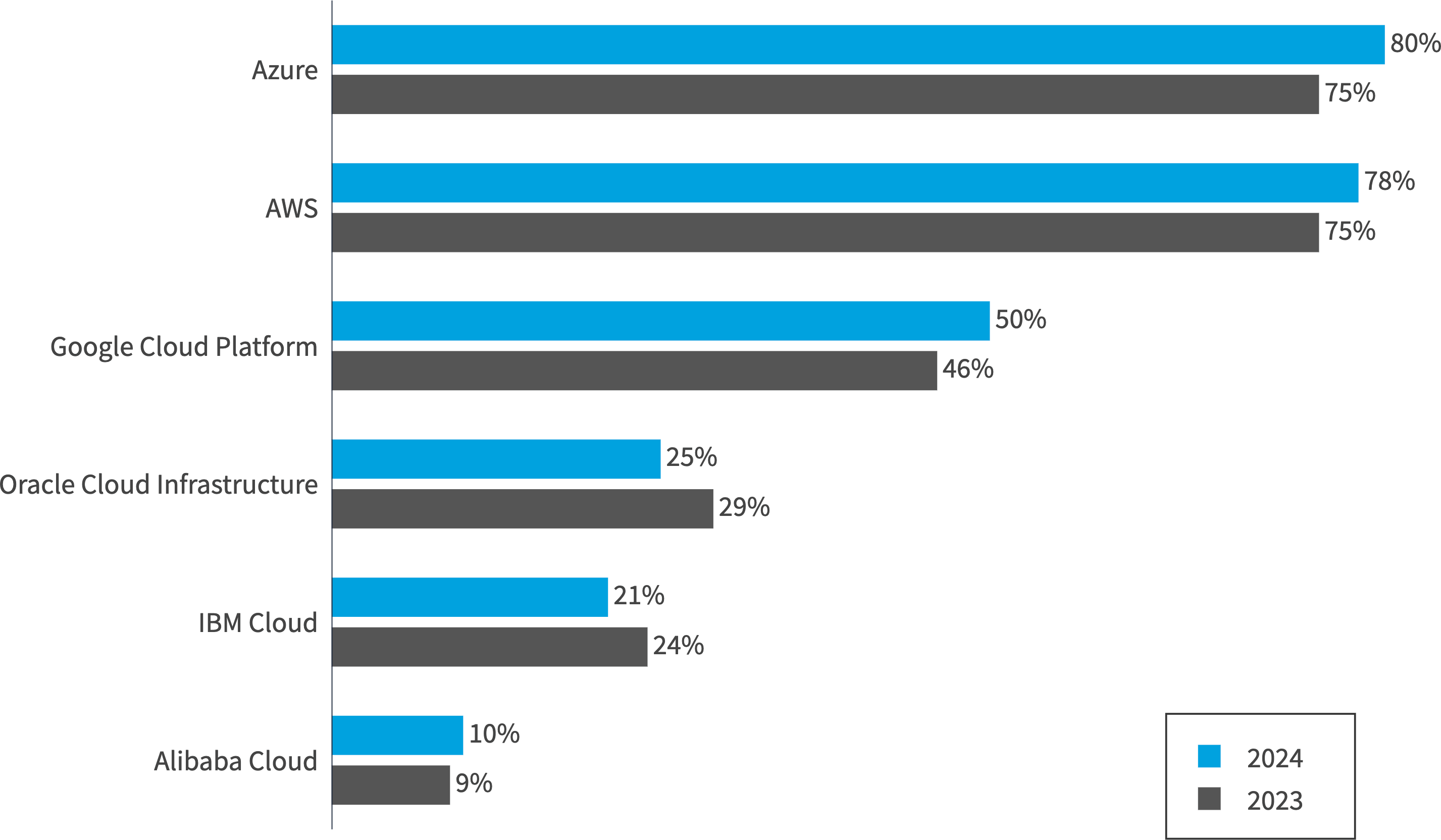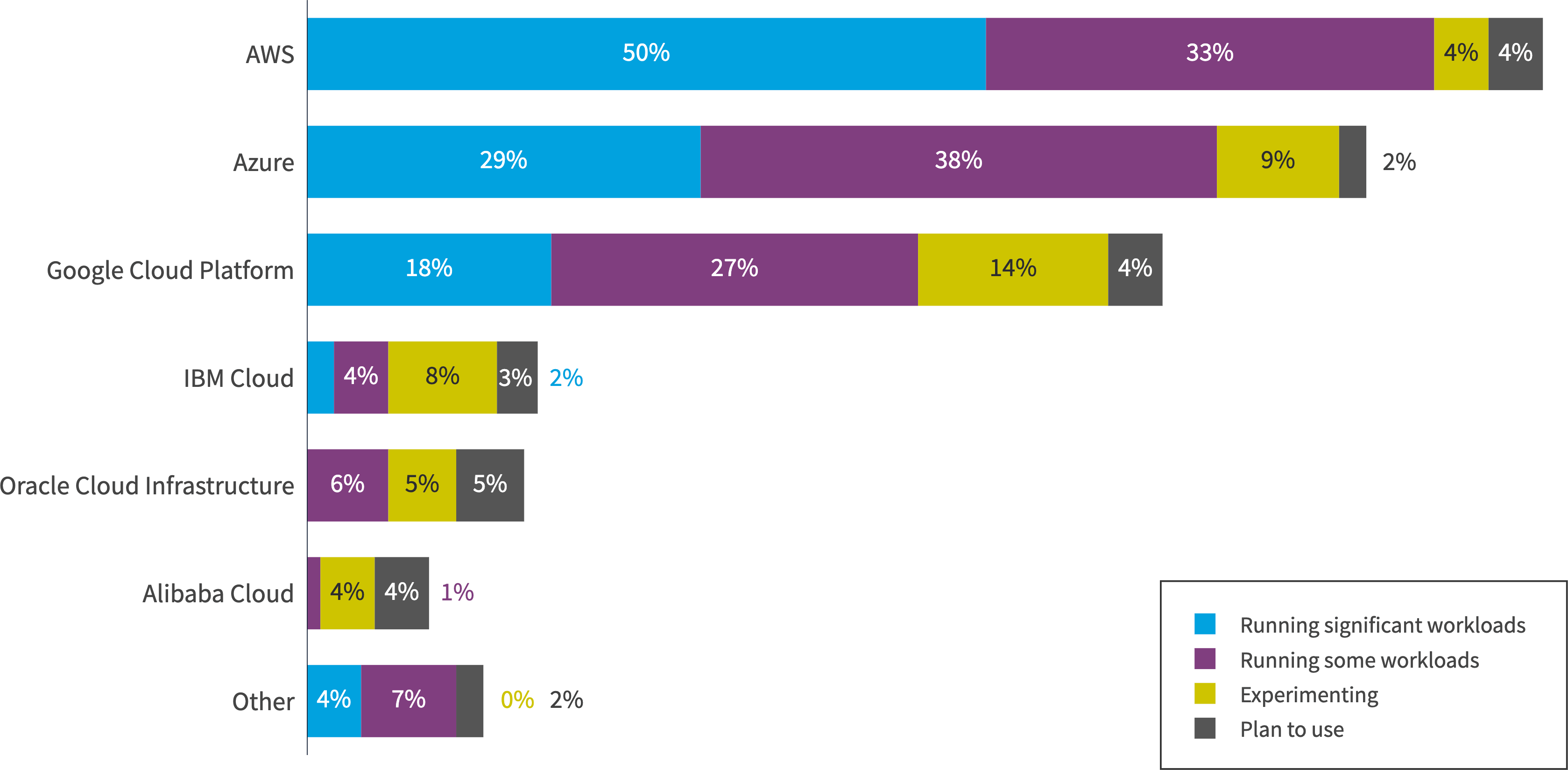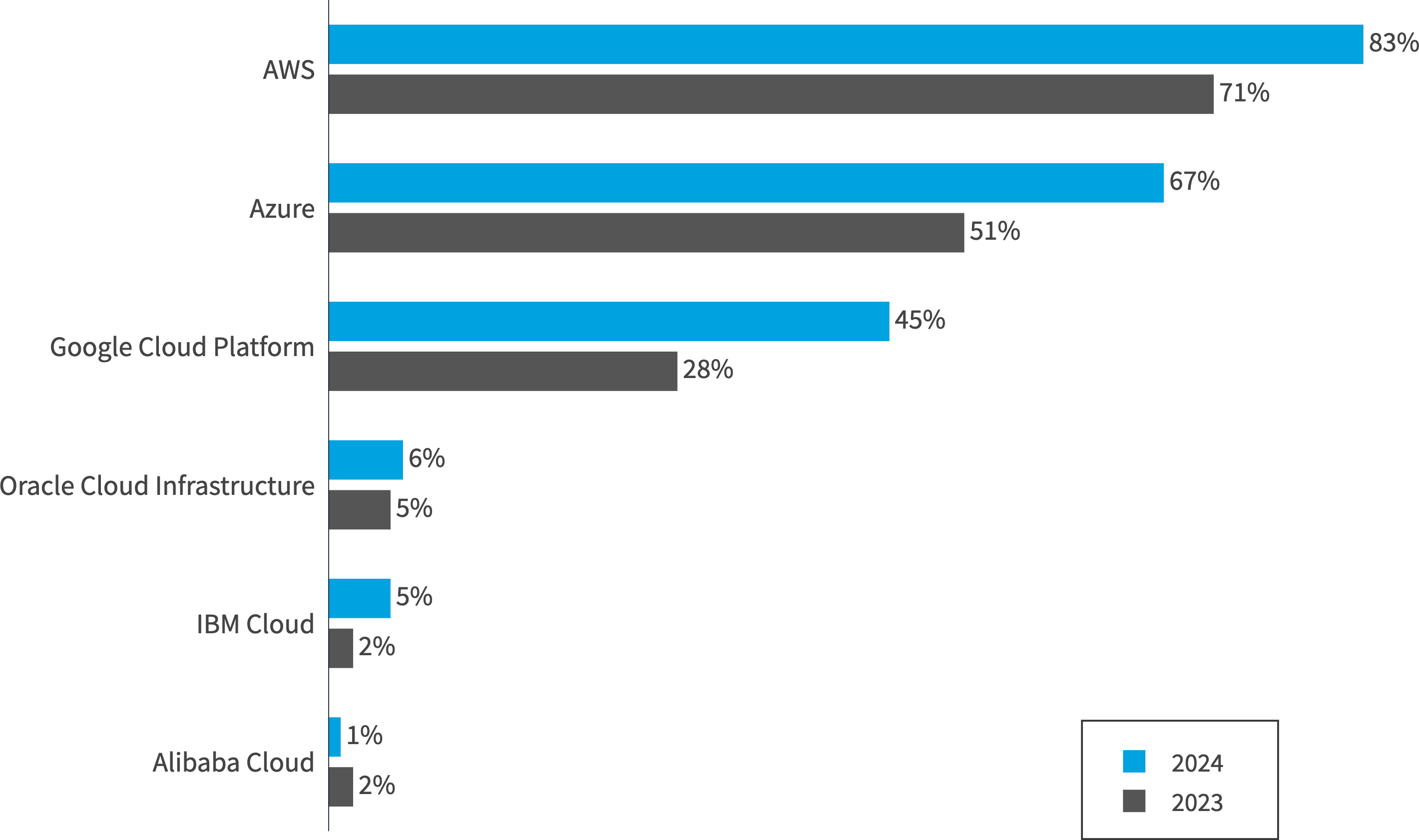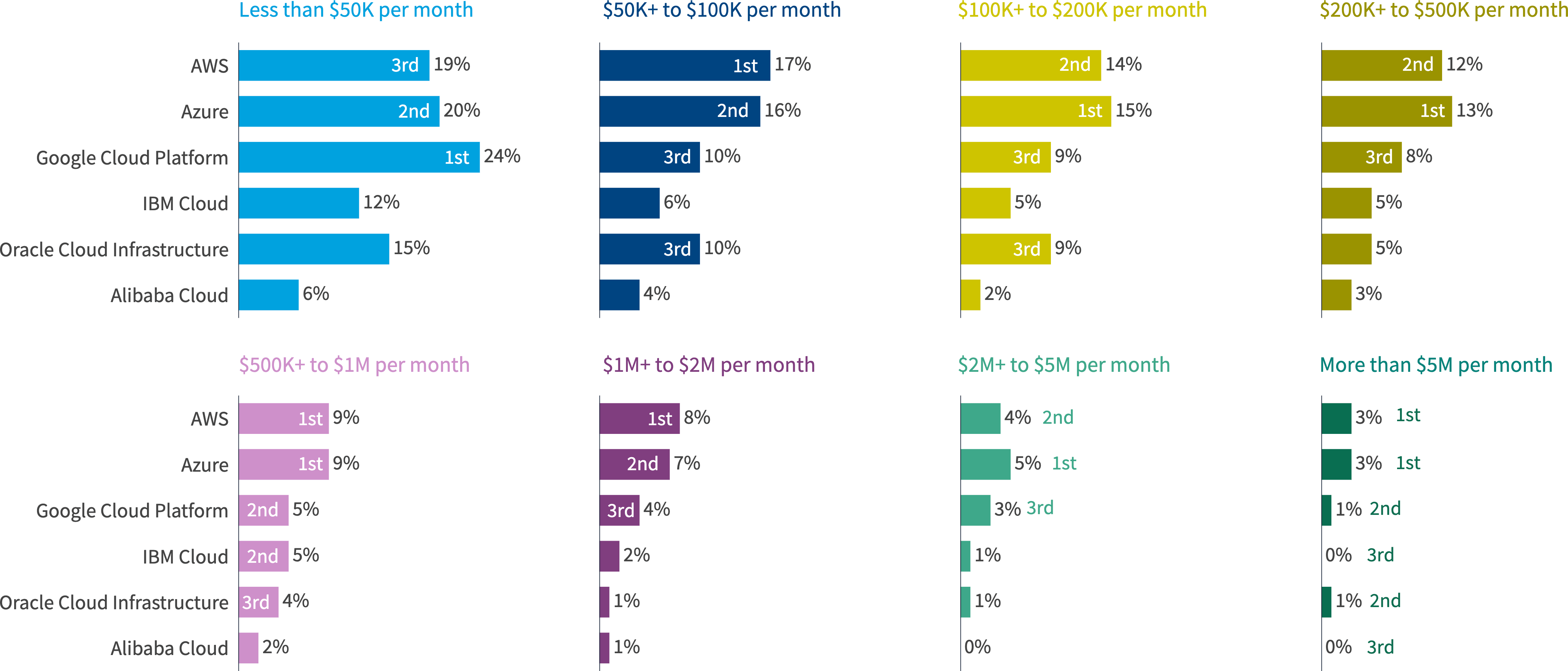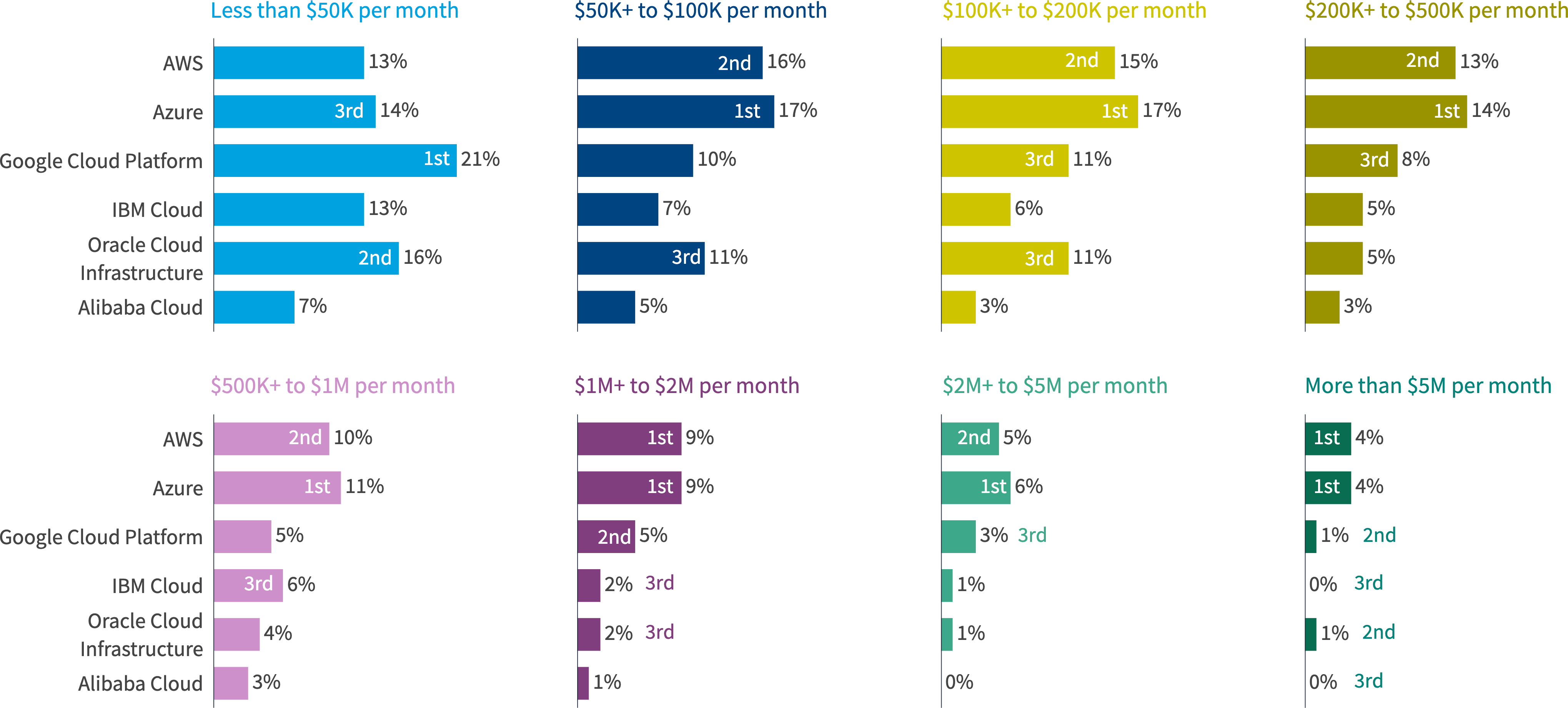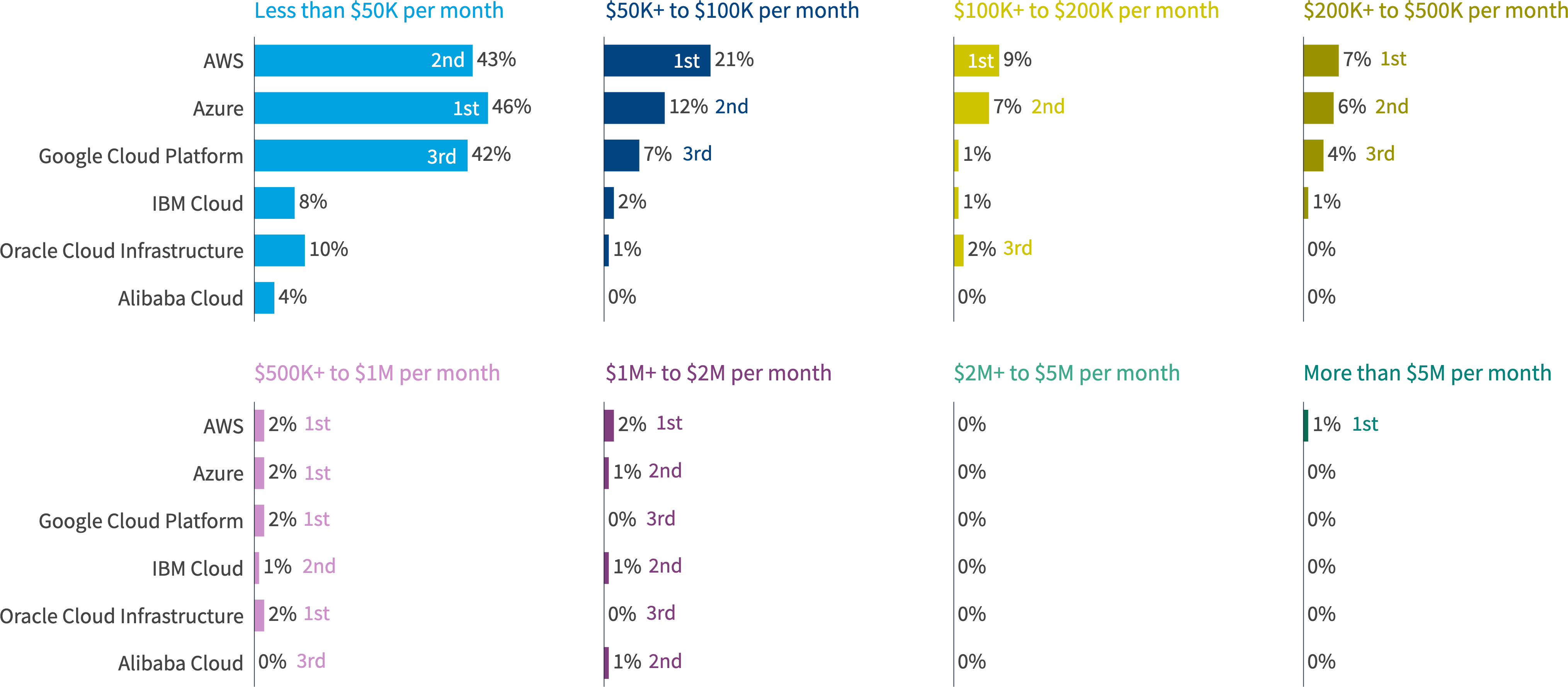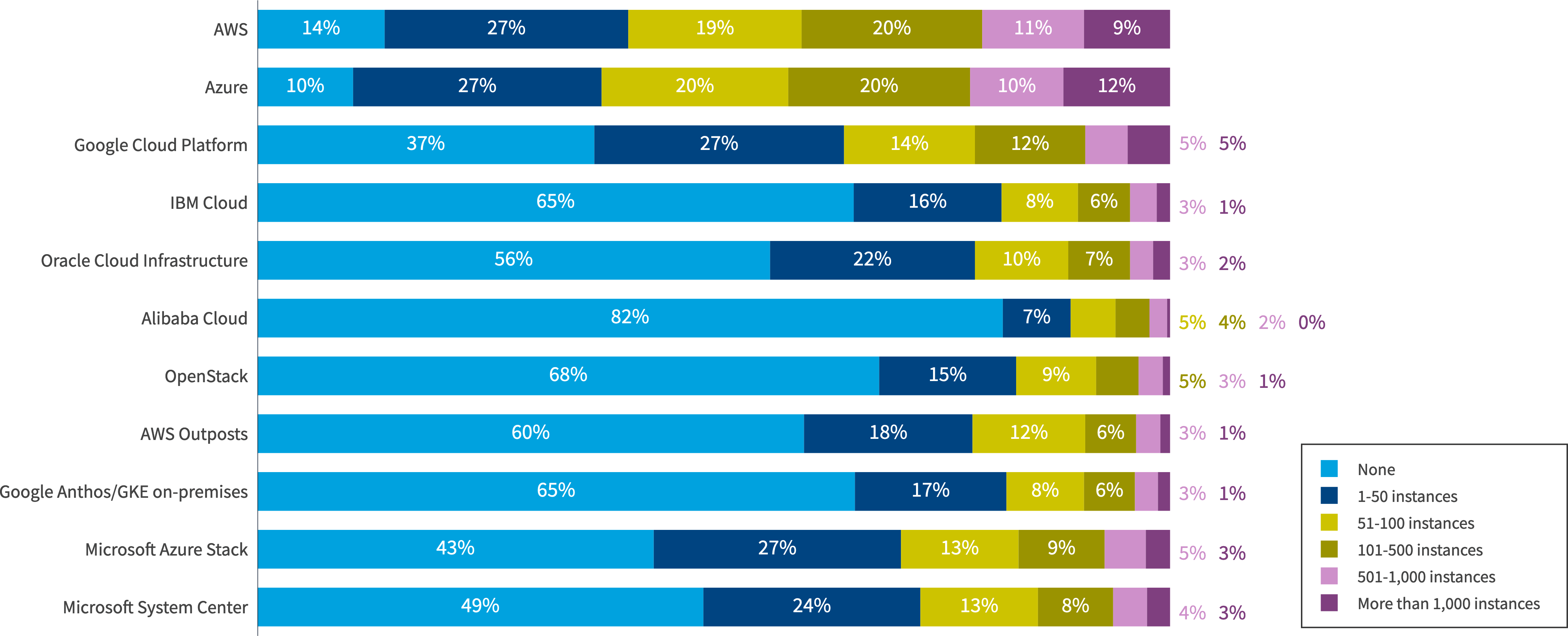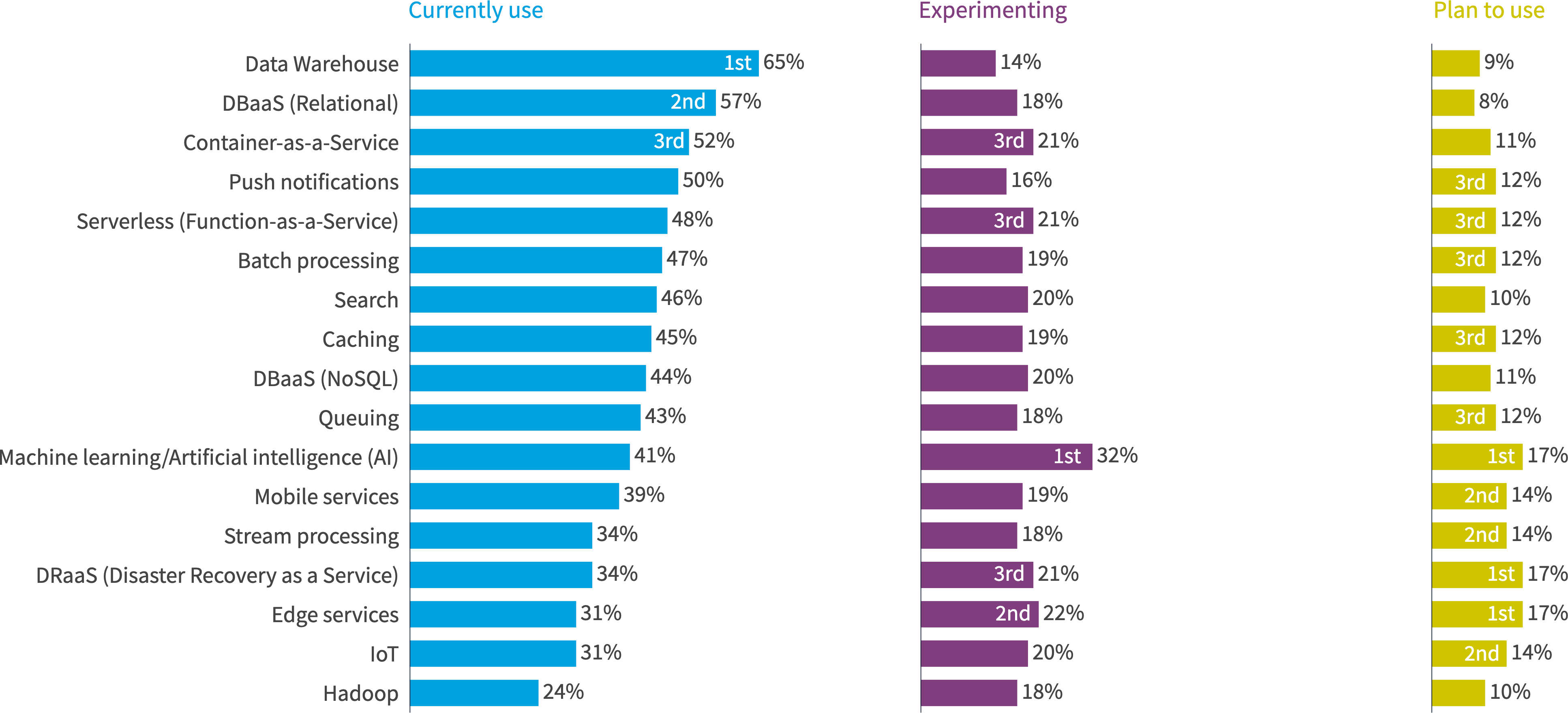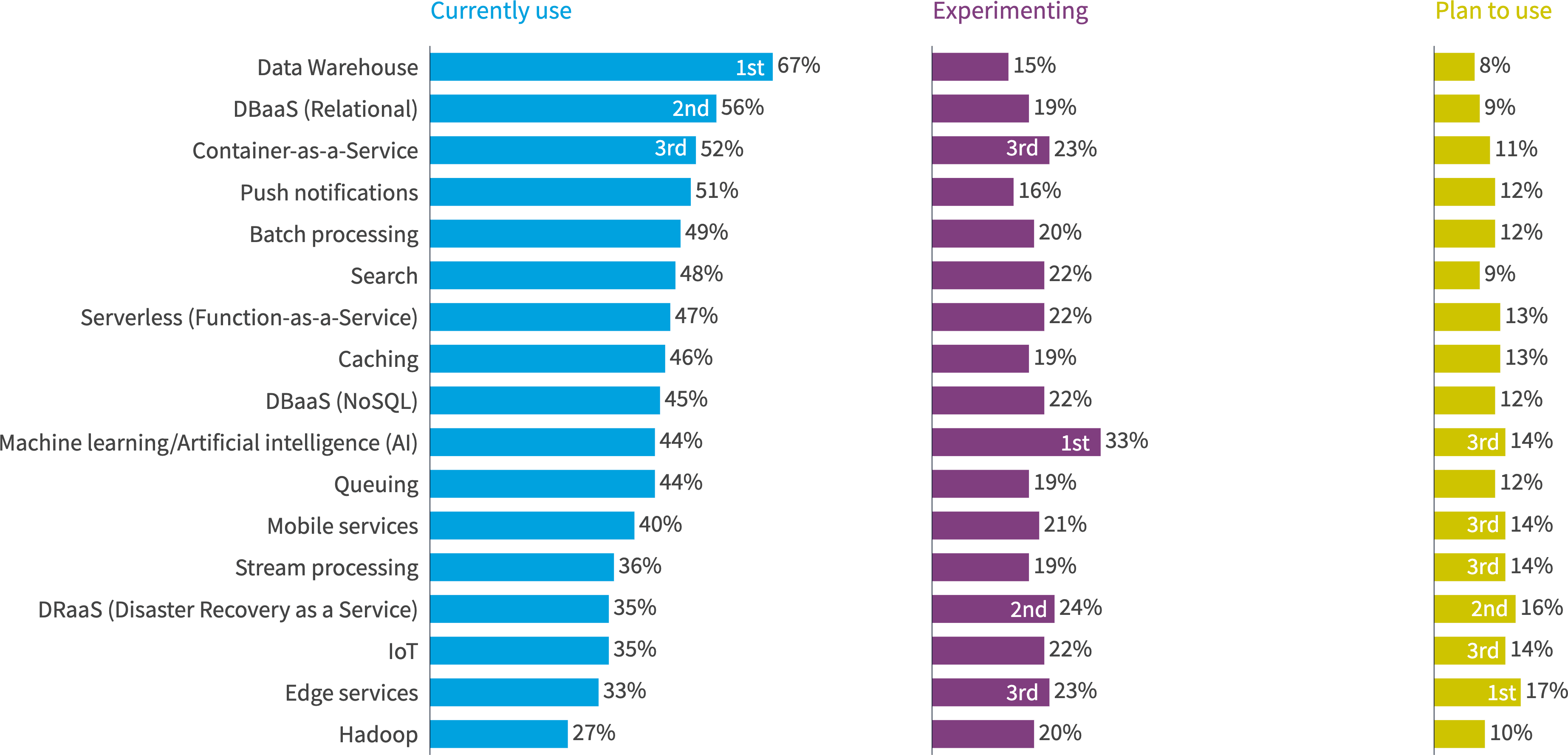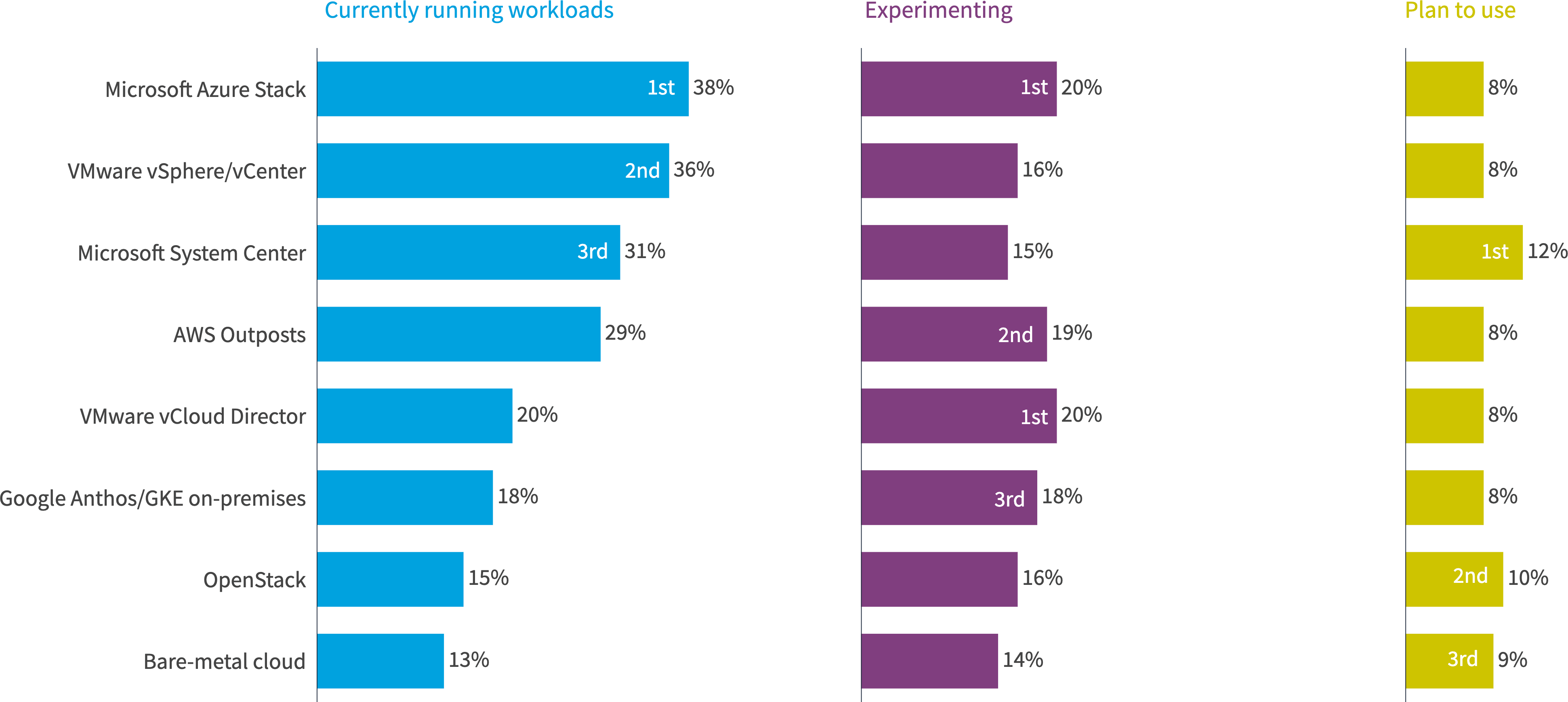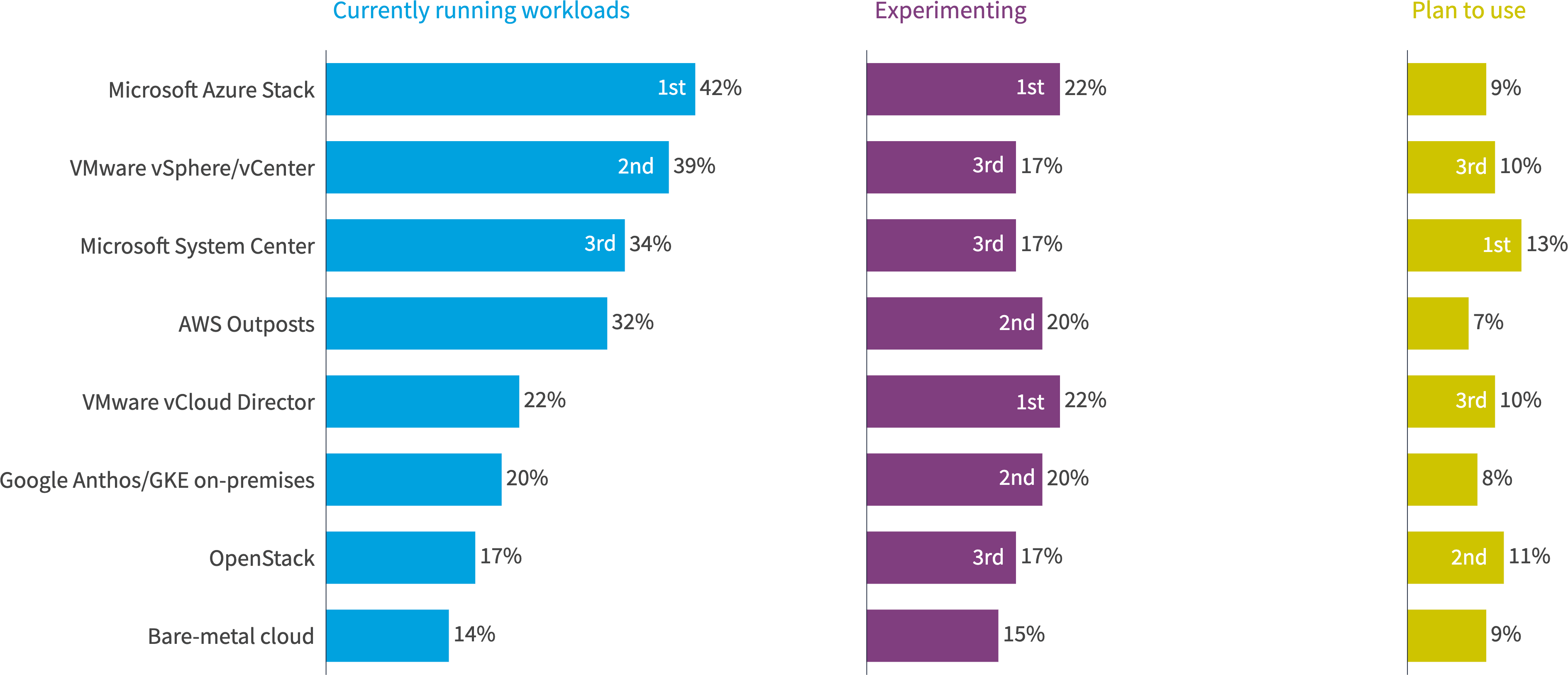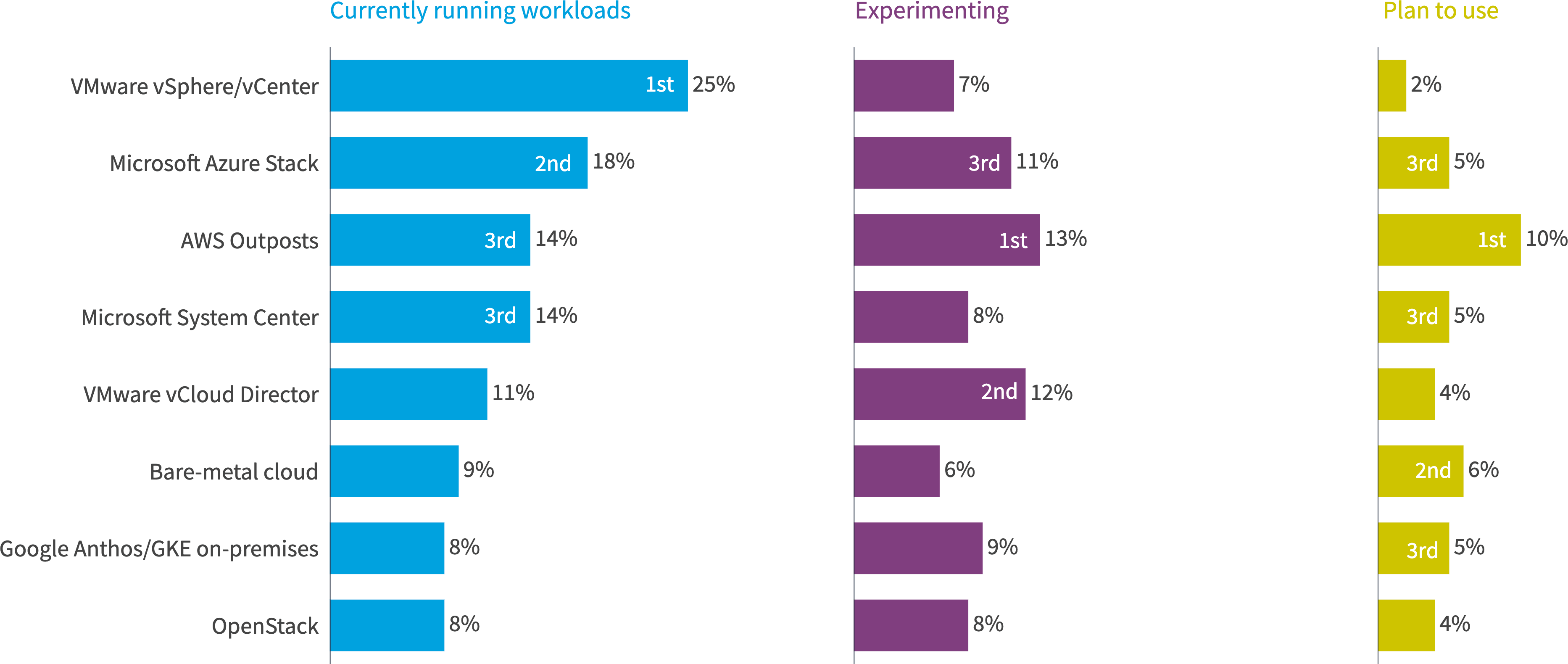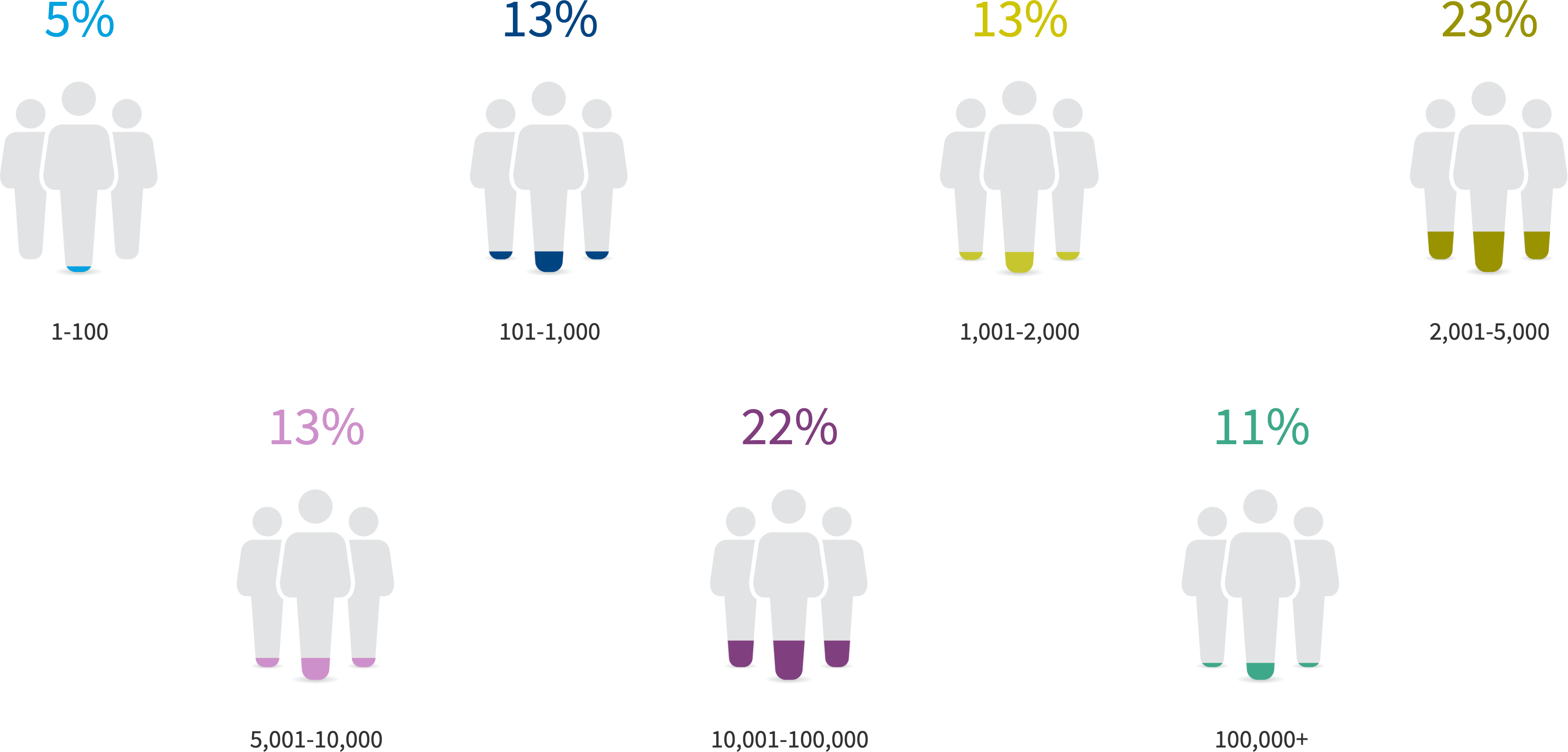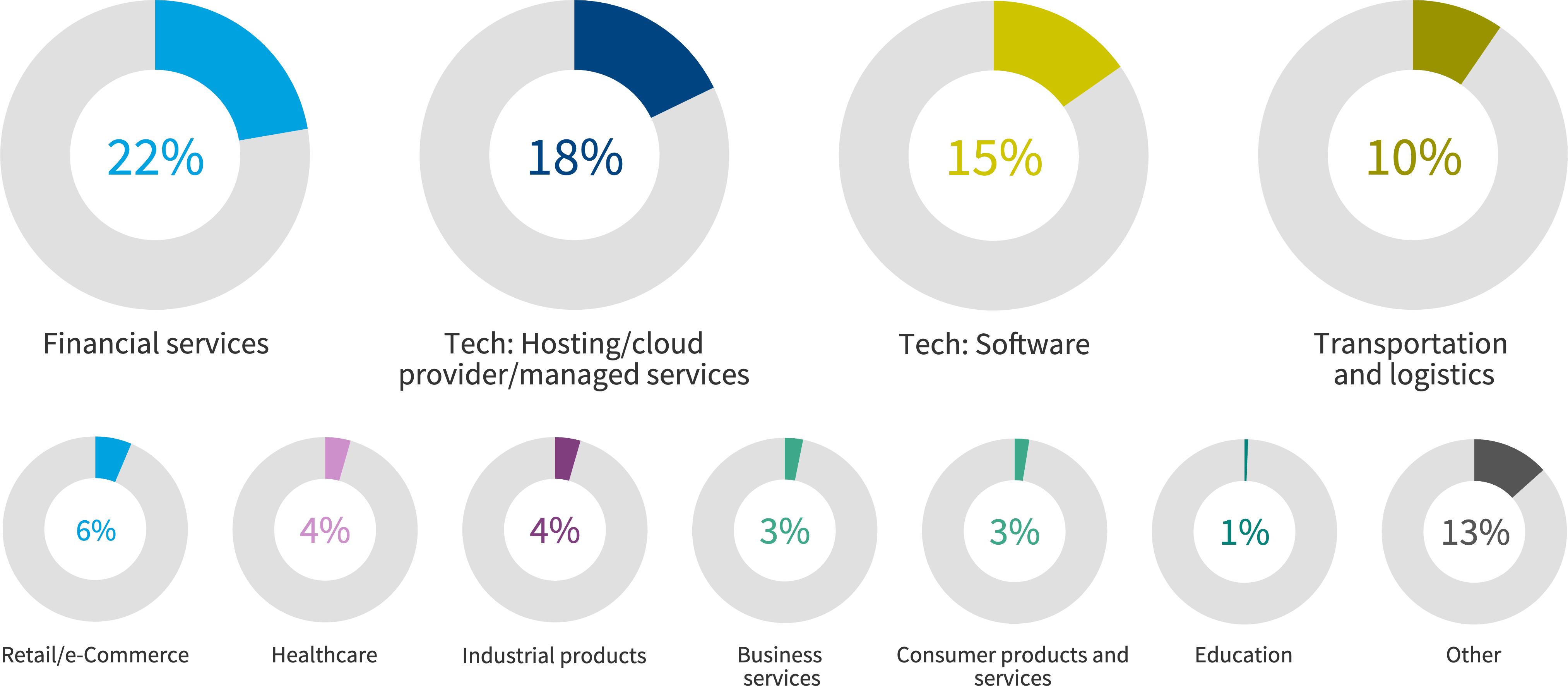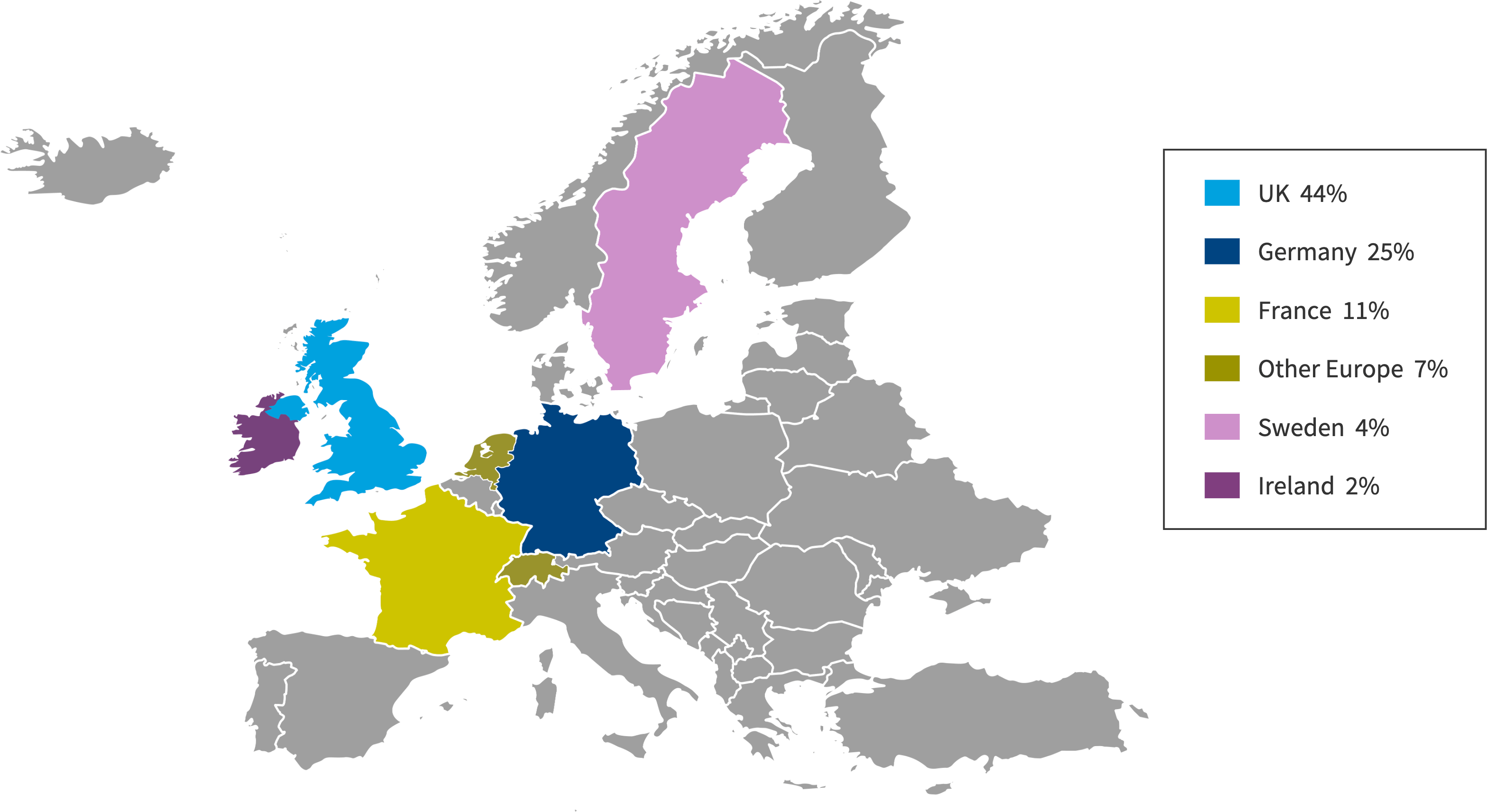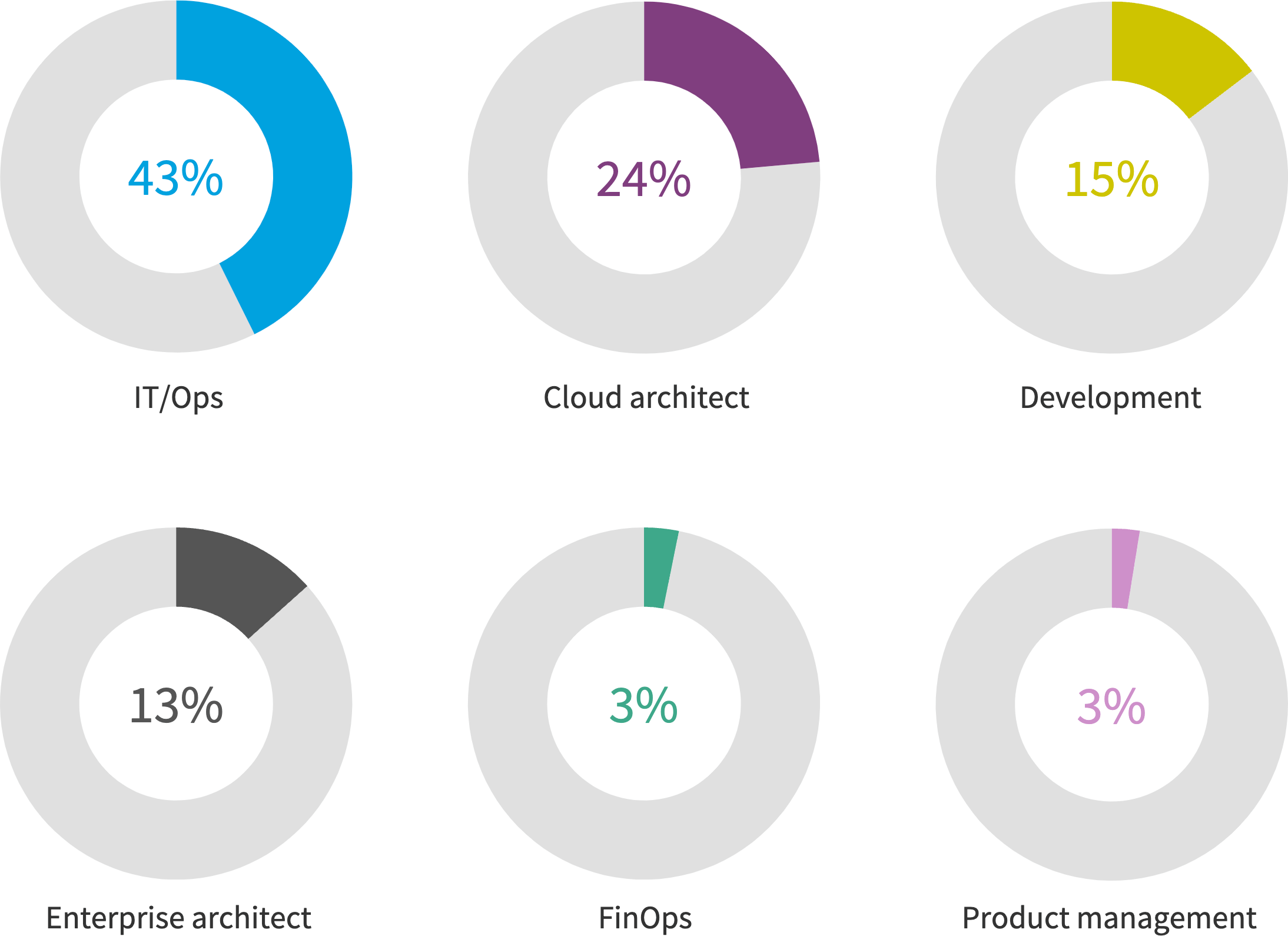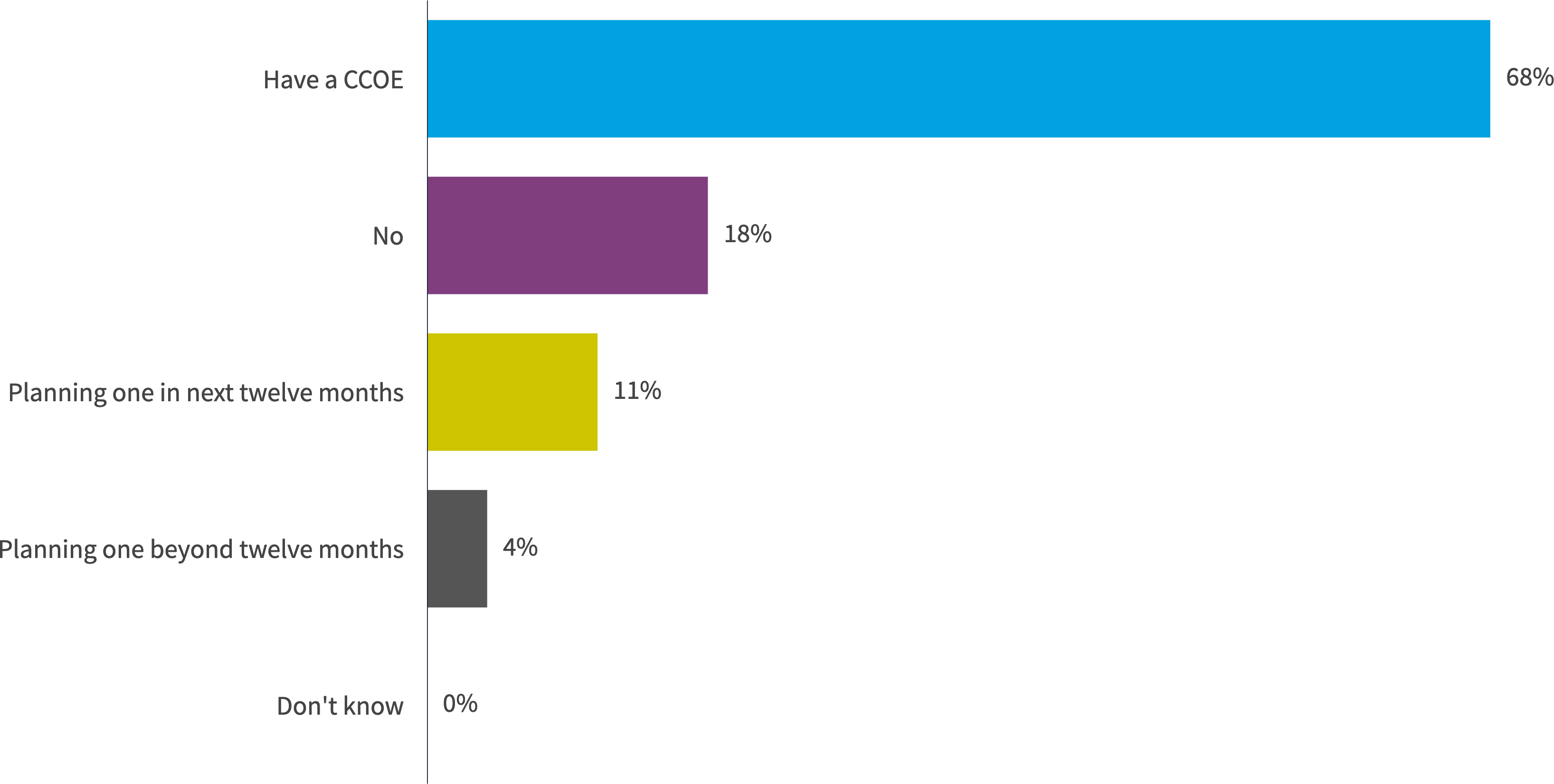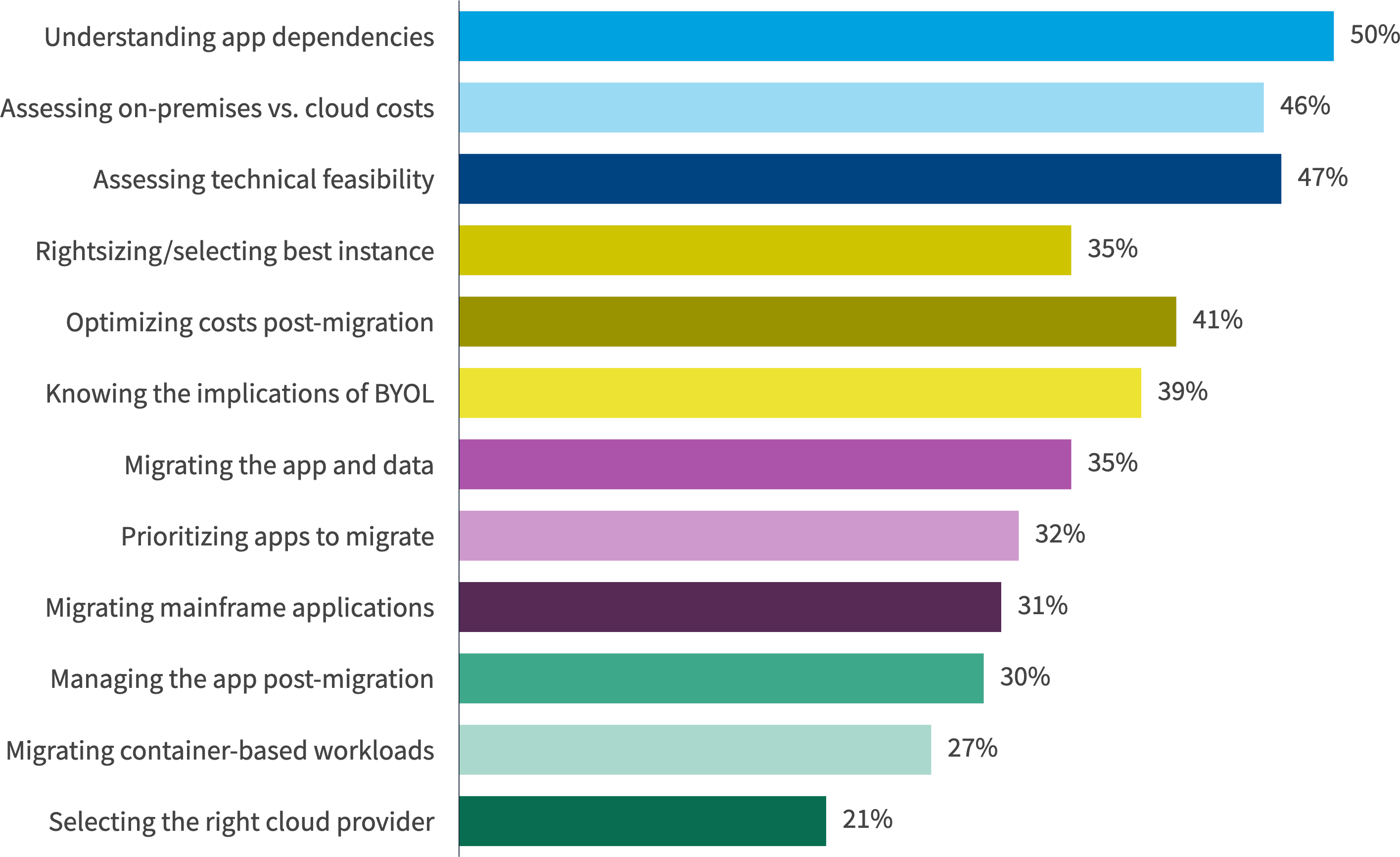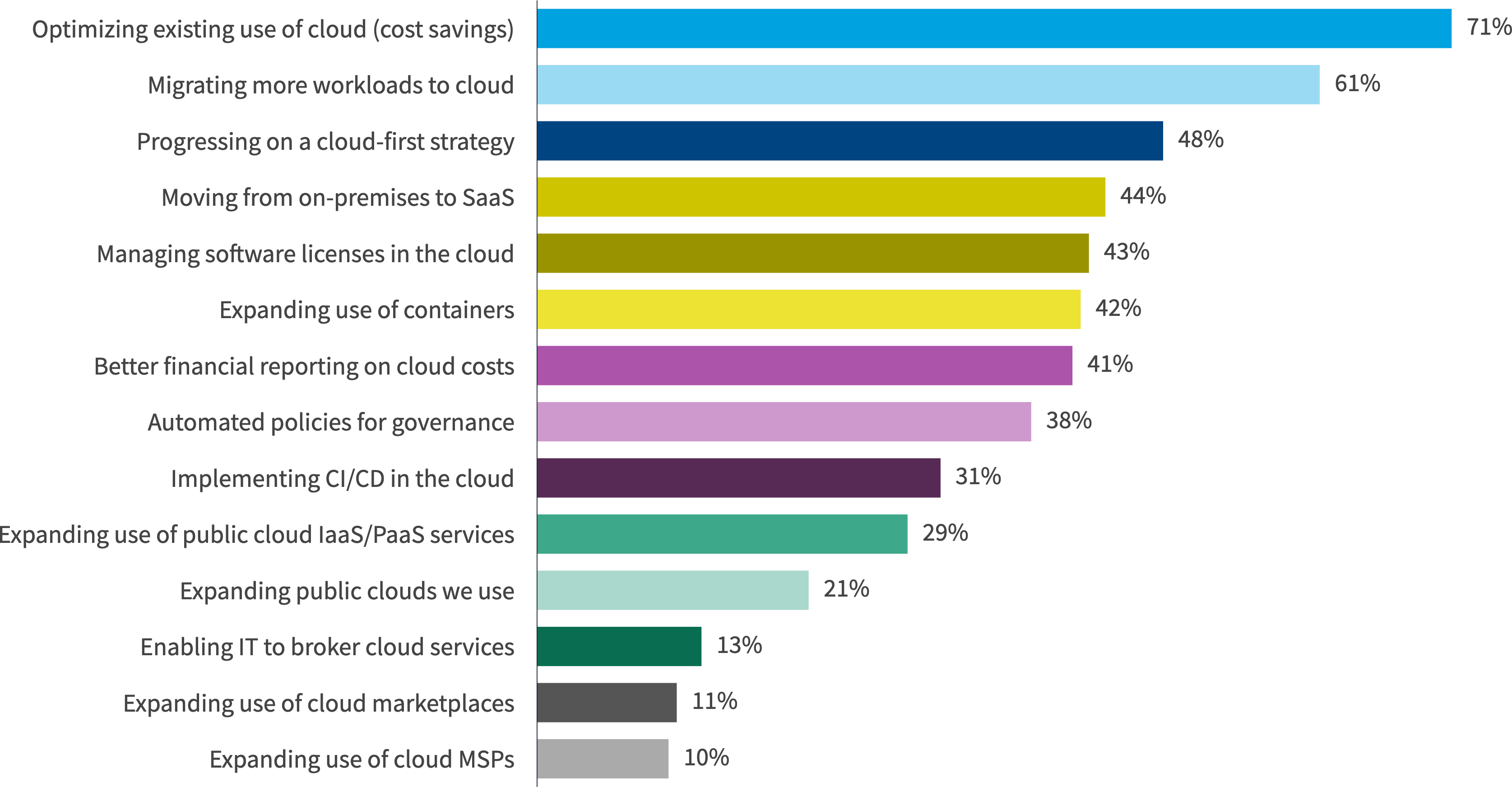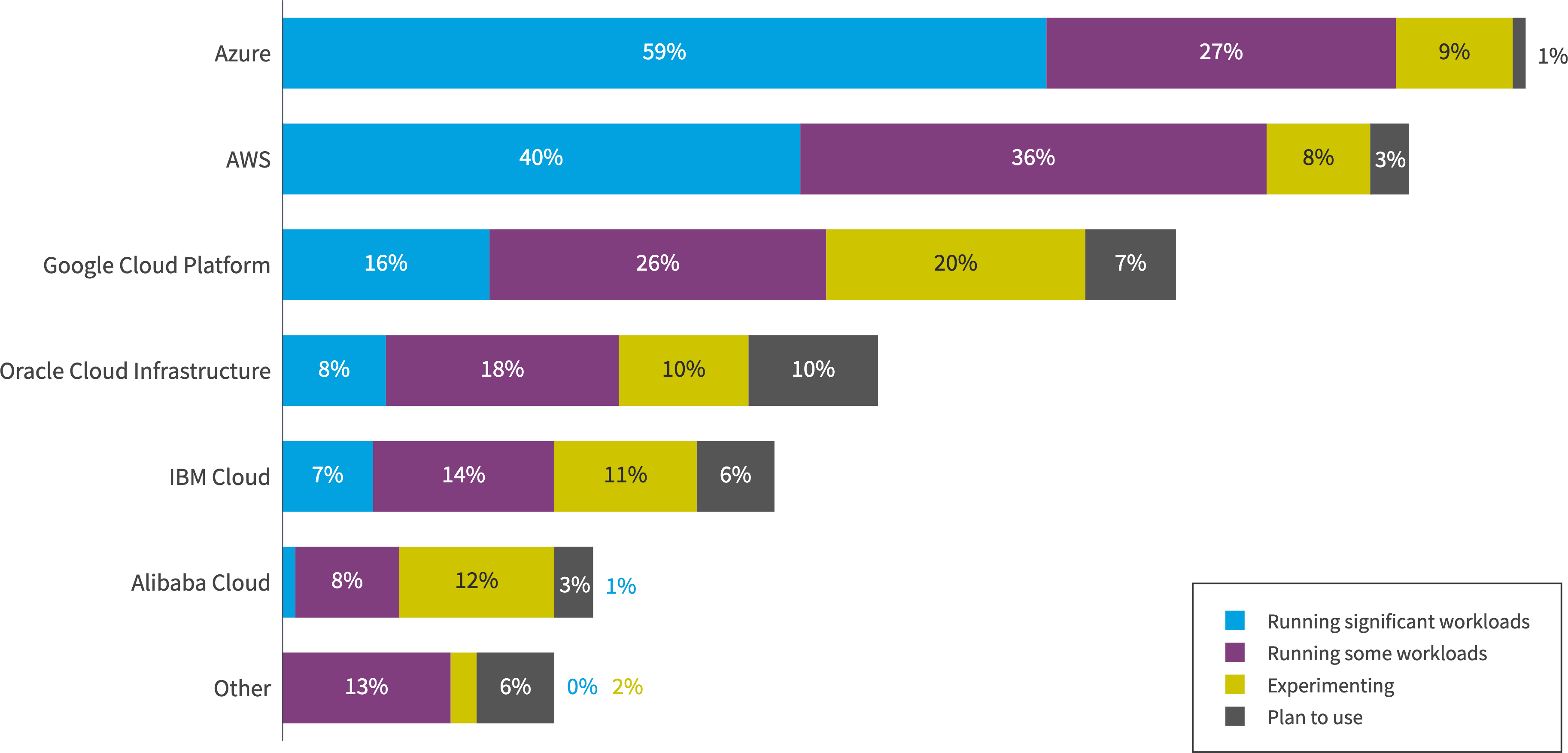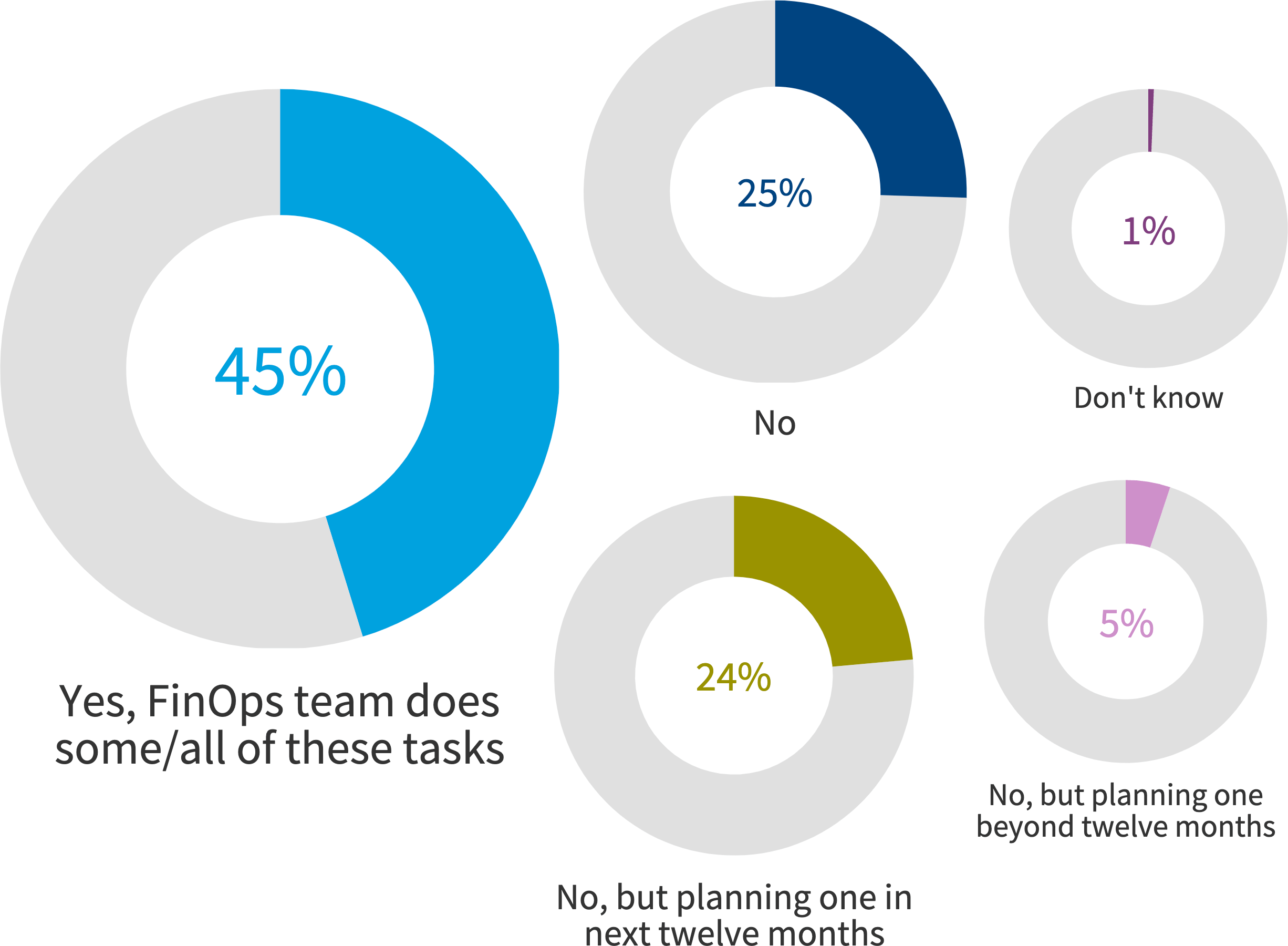

AI experimentation outpaces usage;
The Flexera 2024 State of the Cloud Report sheds light on cloud computing trends and the pressures facing IT professionals and the strategic initiatives they’re utilizing to remain competitive in today’s dynamic and evolving landscape.
Report highlights
Here’s a sample of key findings from this year’s report based on a survey of 753 cloud decision-makers and users from around the world.
In the face of ongoing economic uncertainties, many organizations are investing in transformative initiatives such as generative AI (GenAI) and sustainability. At the same time, managing costs effectively remains a top priority—and trying to find a balance between the two is a formidable challenge. Despite this, cloud usage is on the rise, while wasted spend is decreasing. Hybrid cloud strategies are evolving, with a notable increase in the number of businesses adopting a more comprehensive view of cost management for hybrid deployments, including the licensing of software used in the cloud.
Cloud spending remains substantial, as nearly half of all workloads and data are now in the public cloud. For the second year in a row, managing cloud expenses has emerged as a more pressing challenge than security, highlighting an intensified focus on FinOps practices and tools for optimizing cloud costs and enhancing efficiency. This trend is consistent with the broader adoption of multi-cloud strategies, the increased use of cloud services, and the establishment of cloud centers of excellence (CCOEs) in more than half of the organizations surveyed, signifying a shift toward more centralized and strategic cloud management.
The Flexera 2024 State of the Cloud Report reveals:
Methodology
The Flexera State of the Cloud survey tapped 753 technical professionals and executive leaders worldwide in the winter of 2023. The network includes professionals across industries and context areas.
Flexera sources participants from an independent panel that is rigorously maintained and is comprised of vetted respondents with detailed profiles. All numbers and percentages are rounded to the nearest whole number.
At numerous points throughout the report, we’ve provided our own interpretation of the data as Flexera Points of View.
SMBs: Businesses with fewer than 1,000 employees
Enterprises: Organizations with more than 1,000 employees
Large enterprises: Organizations with more than 10,000 employees
Reuse
We encourage the reuse of data, charts and text published in this report under the terms of this Creative Commons Attribution 4.0 International License. You are free to share and make commercial use of this work as long as you provide attribution to the Flexera 2024 State of the Cloud Report as stipulated in the terms of the license.
This year’s survey leans toward enterprises, with 68% of respondents in organizations with more than 2,000 employees. Eight percent have more than 100,000 employees.
Tech-related industries (35% between software, hosting/cloud provider/managed services) and financial services (19%) lead respondents’ industries, followed by healthcare (12%).
Similar to last year, nearly two-thirds of the respondents are from the Americas (62% are from the U.S.). Respondents from Europe made up 20% of the total, with the UK accounting for 9% of that group.
The following figures indicate the breakdown of respondents by business role and where they work within their organization. Twenty-one percent of respondents are cloud architects, and 8% report being in a FinOps role. There was a large gain in respondents who said they work in central cloud teams (CCOE or similar), increasing to 50% this year from 35% last year.
Cloud adoption continues to become more mainstream. Heavy users now represent 71% of respondents, up from 65% last year.
Most respondents have a significant influence on both IaaS/PaaS and SaaS, with a particular increase in SaaS decision-making (84%) as well as usage and costs (74%). SaaS users also increased from 63% to 70% year over year (YoY).
Organizations are embracing multi-cloud
Most organizations have employed multi-cloud, with 89% of respondents reporting having a multi-cloud strategy (a slight increase from 87% in 2023). Some respondents continue to consolidate on a single cloud: 10% report a single public cloud this year, the same as 2023.
More than half (59%) of respondents use multiple public clouds. Fourteen percent use a single public cloud.
A growing percentage of respondents use multiple public and one private cloud (up from 19% to 23% YoY)
Apps siloed on different clouds and DR/failover between clouds remain the top two multi-cloud implementations. Apps siloed on different clouds increased the most (up to 57% from 44% YoY). Data integration between clouds increased to 45% from 37% YoY as organizations look for the best fit for applications and data analysis.
Organizations continue to factor in cost and performance prior to deploying workloads in the cloud. Enterprises continue to find the best fit, often running applications in a single cloud, which simplifies configuration, maintenance and security. A growing number of organizations find use cases for data analysis in clouds separate from the one an application is running in.
Security tools remain in the top spot this year for all organizations, followed closely by cost optimization (FinOps) tools and management tools. A higher percentage of large enterprises use security tools (61%) and FinOps tools (57%).
Hybrid, public cloud only and private cloud only remained similar YoY.
Similar YoY cloud usage indicates that organizations have achieved a steady state; they’ve identified what works for them.
Public cloud adoption continues to accelerate
Nearly a third of all respondents (29%) are currently spending more than $12 million a year in public cloud, up from 24% in 2023. Thirty-six percent of enterprises spent more than $12 million a year, up from 29% last year.
There’s a 21% increase YoY in organizations spending $1 million or more per month on cloud
Nearly a quarter of respondents (22%) are currently spending more than $12 million per year on SaaS. This increases to 26% for enterprises.
More than a quarter of respondents spend over $12M per year on cloud (29%), and nearly a quarter (22%) spend that much on SaaS
For the first time, Flexera asked respondents for non-SaaS (cloud and on-premises) software costs by vendor. Microsoft is by far the most common non-SaaS software vendor (49%).
In addition, the vast majority of non-SaaS software purchases are made directly from the vendor (85%), with the primary vendor being Microsoft. These purchases are most likely made under an existing enterprise agreement (EA).
It’s promising that 84% of respondents track software licenses in the cloud.
Cloud costs are impacted significantly by software licenses. In some instances, specific licenses can be more than quadruple the costs of the cloud infrastructure on which the applications run. Organizations need to not only factor in cloud costs, but consider the associated software licensing costs as well.
For all respondents, 51% of workloads are in the public cloud today, with an additional 7% expected in the next twelve months. Half of all organizations have data in the public cloud today, with an extra 7% expected in the next twelve months. Enterprises have more complex environments but slightly lower usage rates, with 49% of workloads in public cloud and 48% of data in public cloud.
SMBs are the highest cloud adopters but fell off slightly from the previous year, with 61% (a drop from 67% last year) of workloads and 60% of data in the public cloud for both years.
More than half of respondents said they’ll consider moving at least some consumer data or corporate financial data to the cloud. Nineteen percent said all consumer data will move to cloud/SaaS (up from 17% in 2023), and 18% said all corporate financial data will move to cloud/SaaS (the same as in 2023).
More than one-third of respondents indicate all
nonsensitive data will move to the cloud and nearly
one-fifth say they will move all sensitive data to the cloud
Mapping all the relationships across apps, hardware and networking devices for each IT-delivered service is notoriously difficult to do. Over half of respondents reported understanding app dependencies (54%), assessing on-premises vs. cloud costs (46%) and assessing technical feasibility (45%) as the top three cloud migration challenges.
Nearly half of respondents cite assessing
on-premises vs. cloud costs as a challenge
A YOY analysis of sensitive consumer data shows a slight continuation of movement away from on-premises toward cloud and SaaS, indicating organizations continue to become more confident in the security controls that cloud provides.
Cloud initiatives and metrics
This is the eighth year in a row that optimizing the existing use of cloud (cost savings) is the top initiative (increasing from 62% to 71% YoY). Notably, progressing on a cloud-first strategy dropped to 48% from 55% YoY. Migrating more workloads to cloud increased from 44% to 58% YoY. A high percentage of heavy cloud users (73%) see optimizing the existing use of the cloud (cost savings) as a top initiative.
Optimizing existing use of cloud and migrating more workloads to the cloud are the top initiatives, regardless of usage level
The top metric for measuring progress in the cloud has been cost efficiency/savings for the past six years. This year, it has increased to 65% from 60% YoY. The number of workloads migrated to the cloud has also increased YoY from 31% to 36%.
Organizations are taking a
centralized approach to cloud
Most organizations (63%) have a CCOE or plan to create one within the next year (14%). Seventy percent of large enterprises already have a CCOE, whereas only 29% of SMBs do. Fifteen percent of enterprises expect to add a CCOE in the next twelve months, and 6% expect to add one beyond that time. Just over a quarter (26%) of SMBs are planning to have a CCOE in the future.
More than half of organizations already have CCOEs;
this proportion could jump to more than 75% in years to come
Half of organizations (51%) have a FinOps team, and 20% are planning on creating one in the coming year.
As usual, infrastructure and ops as well as CCOE or cloud teams lead the charge for cloud cost management. Infrastructure and ops teams are most likely to govern cloud (IaaS/PaaS) usage/costs (53%), optimize SaaS usage/costs (54%) and govern software licenses in IaaS/PaaS (50%).
Even if software asset management (SAM) teams aren’t responsible for cloud and SaaS costs, they need to ensure the responsible teams have the detailed licensing information required to use those licenses effectively, remain compliant, minimize risk and save the company money.
Fifty-three percent of all organizations are outsourcing at least some public cloud work, including 26% that use managed service providers (MSPs) for most public cloud usage.
Fifty-six percent of enterprises are outsourcing at least some public cloud work. SMB usage of MSPs has increased to 36% from 26% YoY.
Top challenges are security, spend and expertise
For the second year in a row, managing cloud spend topped security as the top challenge facing all organizations. This shift is likely due to organizations becoming more comfortable with cloud security, while the increased use of cloud services leads to increased spend. Managing this spend has become a priority for organizations. As in previous State of the Cloud findings, a lack of resources and expertise continues to be a major challenge.
Organizations struggle to control growing cloud spend
It’s easy to see why FinOps continues to evolve and grow as a cultural practice and financial management discipline. Public cloud spend was over budget by an average of 15%. Respondents remain bullish on cloud, as 31% expected their spend to increase in the next twelve months.
Respondents reported their public cloud waste is 27%, similar to the 28% reported last year.
Estimated wasted cloud spend in IaaS and PaaS has been trending down after reaching a high of 32% in 2022. FinOps best practices are realizing financial benefits for many organizations
Software licenses can greatly impact the total cost of an application running in the cloud. Respondents reported that wasted software spend in the public cloud was 24%.
Cloud provider pricing structures are complex and difficult to decipher, but provider discounts offer opportunities to reduce costs. The majority of respondents are using either Azure EA (Enterprise Agreement) discount (45%), AWS Reserved Instances (44%), IBM Cloud Subscriptions (42%), Google Committed Use discount (42%) or Azure Reserved Instances (40%).
Automated policies such as utilization monitoring (56%) and those that shut down workloads after hours (48%) are the most common ways to optimize cloud costs. Roughly a third of respondents (35%) have automated policies in place to tag cloud resources, which is a fundamental component of FinOps practices.
Despite tags being critical to cost allocation and optimization, only 35% of organizations currently use automated policies that implement required tags.
This year we asked survey respondents to weigh in on how they managed SaaS and software costs. For the majority of organizations (57%), SaaS costs are tracked separately from IaaS and PaaS costs.
Many organizations struggle with finding the right bucket to put SaaS costs in, so these costs are often in a category by themselves. As organizations begin to adopt new cost management and optimization tools, these SaaS costs may be considered “cloud costs” as the definition of cloud begins to envelop additional non-on-premises costs.
FinOps professionals often use unit economics as a key metric to gauge the efficiency of cloud spend. Forty-three percent of respondents said they use unit economics as a key metric, up from 39% last year.
The 43% of respondents using unit economics as a key metric is good, but we expect this percentage to increase as FinOps practices become more mainstream.
Public cloud adoption is evolving
Amazon Web Services (AWS) and Microsoft Azure continue to be the most widely used cloud platforms. Specifically, 49% of respondents reported using AWS for significant workloads, while 45% reported using Azure and 21% reported using Google Cloud Platform. In contrast, usage of Oracle Cloud Infrastructure, IBM and Alibaba Cloud remained relatively unchanged compared to the previous year.
What public cloud providers does your organization use?
The top three cloud providers—AWS, Azure and Google Cloud Platform—each gained adoption this year compared with last.
YoY public cloud provider adoption rates for all organizations
80% of all respondents now use Azure for at least some production workloads. This is the first time in the history of the State of the Cloud Report that a single cloud provider reached the 80% threshold
AWS and Azure are tied with 49% of enterprises running significant workloads. However, AWS has a significant lead over other providers with SMBs (50% for AWS, 29% for Azure and 18% for Google Cloud Platform).
The use of some public cloud providers increased YoY for SMBs. For example, 83% of respondents report using AWS, up from 71% YoY. Azure is up to 67% from 51% YoY, and Google Cloud Platform is up to 45% from 28% YoY. For the second year in a row, the highest percentage of SMBs experimenting with a cloud provider are using Google Cloud Platform.
Enterprise use of public cloud providers
Azure’s ongoing rollout of competitive features, especially in artificial intelligence (AI), could make it a more appealing choice for small organizations aiming to boost their business growth
With all respondents, AWS and Azure are nearly tied across all spending tiers.
Although Google Cloud Platform adoption remains well behind that of AWS and Azure, it leads with those spending less than $50K per month (24% for Google Cloud Platform, 20% for Azure and 19% for AWS). This aligns with respondents experimenting with it (previously noted at 17% for Google Cloud Platform, 9% for Azure and 8% for AWS).
How much do you spend on each cloud provider?
Enterprises spending more than $1M a month continue to increase adoption of AWS (up to 18% from 15% YoY) and Azure (up to 19% from 15% YoY)
AWS (43%), Azure (46%) and Google Cloud Platform (42%) are near parity with SMBs that spend less than $50,000 on public cloud. For SMBs that spend $50,000 or more on public cloud, AWS holds the lead (42%) over Azure (28%).
The number of virtual machines (VMs) or instances running in each cloud provides additional insight into the size of the organizational footprints within them. AWS and Azure lead among the larger-footprint sizes of more than 500 instances. In the private cloud/on-premises space, Microsoft offerings such as Microsoft Azure Stack and Microsoft System Center have more large-footprint deployments than either AWS Outposts or Google Anthos.
Use of public cloud PaaS offerings is increasing
In this year’s survey, nearly all PaaS offerings saw a gain in usage, with the largest being in data warehouse (up to 65% from 56% YoY). Container-as-a-service (52%) and serverless (function- as-a-service) (48%) are both up 9 percentage points this year. Machine learning/artificial intelligence (AI) had a modest gain at 41%, up from 36% last year.
Public cloud services used by all organizations
77% of enterprises are either currently using (44%) or experimenting with (33%) AI/ML. Organizations are experimenting more with AI/ML than with any other PaaS offering
Although current AI/ML usage is only at 41% with all respondents, Flexera expects this to increase significantly in the coming years as more and more organizations leverage the emerging GenAI services offered by public cloud providers.
This year, we asked if respondents are using any public cloud provider’s GenAI services. A quarter of respondents say they already use it extensively, 38% are experimenting and 22% use it sparingly.
Private cloud plays an important role
Most organizations are taking a multi-cloud, hybrid approach, in which private cloud plays an essential role. Similar to last year, Microsoft Azure Stack ranks first with 38%. VMware vSphere/vCenter climbed into the second spot with 36%, up from 28% YoY. Usage of all other private cloud technologies has remained relatively flat, with OpenStack and bare-metal cloud usage holding the final two spots as they have in prior years.
Azure Stack also continues to lead the way among enterprises (42% currently running workloads). VMware vSphere/vCenter is second at 39%.
Enterprises experimenting with (17% this year, 20% last year) or planning to use (10% this year, 11% last year) vSphere/vCenter dropped. Despite some industry concerns about the Broadcom acquisition of VMware, vSphere/vCenter saw its current usage increase. These trends indicate there is still considerable momentum associated with VMware, and it will take time for enterprises to move away from these offerings.
A quarter of SMBs currently run workloads in VMware vSphere/vCenter.
Among SMBs, vSphere/vCenter usage is higher than other private cloud technologies, but the combination of those experimenting with (7%) and planning to use it (2%) is the lowest
SMBs are less likely to use VMware technologies, possibly due to perceived changes to the channel after the Broadcom acquisition. As the State of the Cloud Report has demonstrated year over year, SMBs are more likely to put workloads in the public cloud—and they are less reliant on private cloud technologies.
Forty-eight percent of respondents say they already have defined sustainability initiatives, including tracking the carbon footprint of cloud usage. When asked how sustainability compares to cost optimization, 59% prioritized cost optimization.
59% prioritize cost optimization, while only 8% prioritize both sustainability and reducing carbon footprint
Although nearly half of all organizations have a defined sustainability initiative that includes carbon footprint tracking of cloud use, only 8% prioritize it in terms of cloud usage. On the other hand, 59% prioritize cost optimization, indicating that until legislation is in place that penalizes organizations for carbon footprints—such as what is currently being implemented in the European Union—prioritizing sustainability will continue to take a back seat to overall cost optimization.
State of the Cloud Report:
European Spotlight
The European distribution is very similar to that of the global respondent pool, with 33% coming from organizations of more than 10,000 employees and 46% from organizations with more than 5,000 employees.
The industries of European respondents also have a breakdown similar to that of the global survey,
heavily weighted toward financial services and technology. European respondents worked at fewer
healthcare organizations (4% compared to 12% globally).
As in years past, European respondents are mostly from the UK (44%), Germany (25%) and France (11%).
The global and European data about roles is mostly consistent across respondent pools. One exception is FinOps, where European respondents were at 3%, compared to 8% globally.
European respondents have more respondents working in a central IT/dev team (26% European vs. 20% globally) but have very few working in FinOps teams (3% vs. 7% globally).
European cloud usage continues to increase, with 73% reporting heavy usage this year, compared to 62% of European heavy users last year and 58% the year before that.
European respondents have similar numbers working in a central cloud team or CCOE. Over two-thirds (68%) have a CCOE currently, and another 11% plan to have one in the next year.
Challenges in Europe are similar to those revealed in the global results. Understanding app dependencies (50%) is the top challenge in Europe, followed by assessing technical feasibility (47%) and assessing on-premises vs. cloud costs (46%).
Each year, these same three challenges claim the top spots globally as well as for European respondents
European respondents are focused on cloud initiatives similar to those of their global counterparts. In Europe, as with all respondents, the top initiative is optimizing existing use of cloud (cost savings) (71%), followed by migrating more workloads to the cloud (61%) and progressing on a cloud-first strategy (48%). European respondents have a slightly heavier focus on moving from on-premises to SaaS offerings (44% compared to 39% globally).
European respondents show a distinct trend in cloud adoption compared to the global average, with a lower proportion using AWS and a higher inclination toward Azure. While 40% of European respondents have significant workloads in AWS, this is lower than the nearly half (49%) seen in the global respondent pool. On the other hand, Azure sees greater usage in Europe, with 59% of European respondents running significant workloads on Azure, a notable 14% increase over the global figure of 45%.
European organizations are less likely (45% compared to 51% globally) to have a FinOps team in place, but they are more likely (24% compared to 20% globally) to implement one in the next year.
FinOps practices have seen more rapid implementation and maturation in the Americas than in Europe, but survey results indicate European FinOps teams are coming online rapidly.
European organizations are more likely than their global counterparts (56% vs. 48%) to have defined sustainability initiatives.
As other parts of the world begin to adopt standards similar to the European Sustainability Reporting Standards (ESRS), the global numbers for this response will most likely increase.
European respondents are less likely (48% vs. 53% globally) to use an MSP for managing at least some of their cloud usage. They are also less likely (6% vs. 10% globally) to plan to use an MSP in the future.
Cloud initiatives move full speed ahead
Despite looming economic uncertainty in tech, the world continues to accelerate digital transformation. The Flexera 2024 State of the Cloud Report highlights key insights surrounding ways in which organizations are keeping costs down while tackling the complexities of hybrid cloud computing, sustainability and new technologies such as GenAI.
